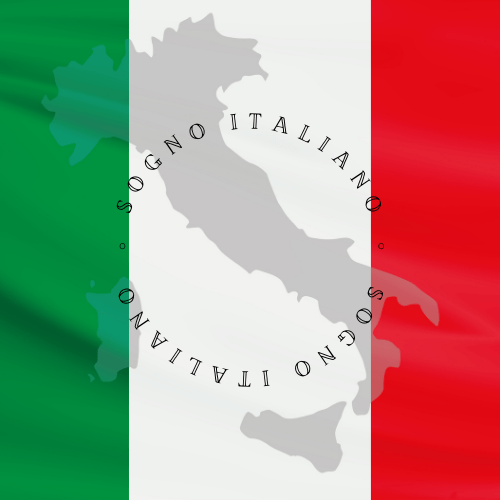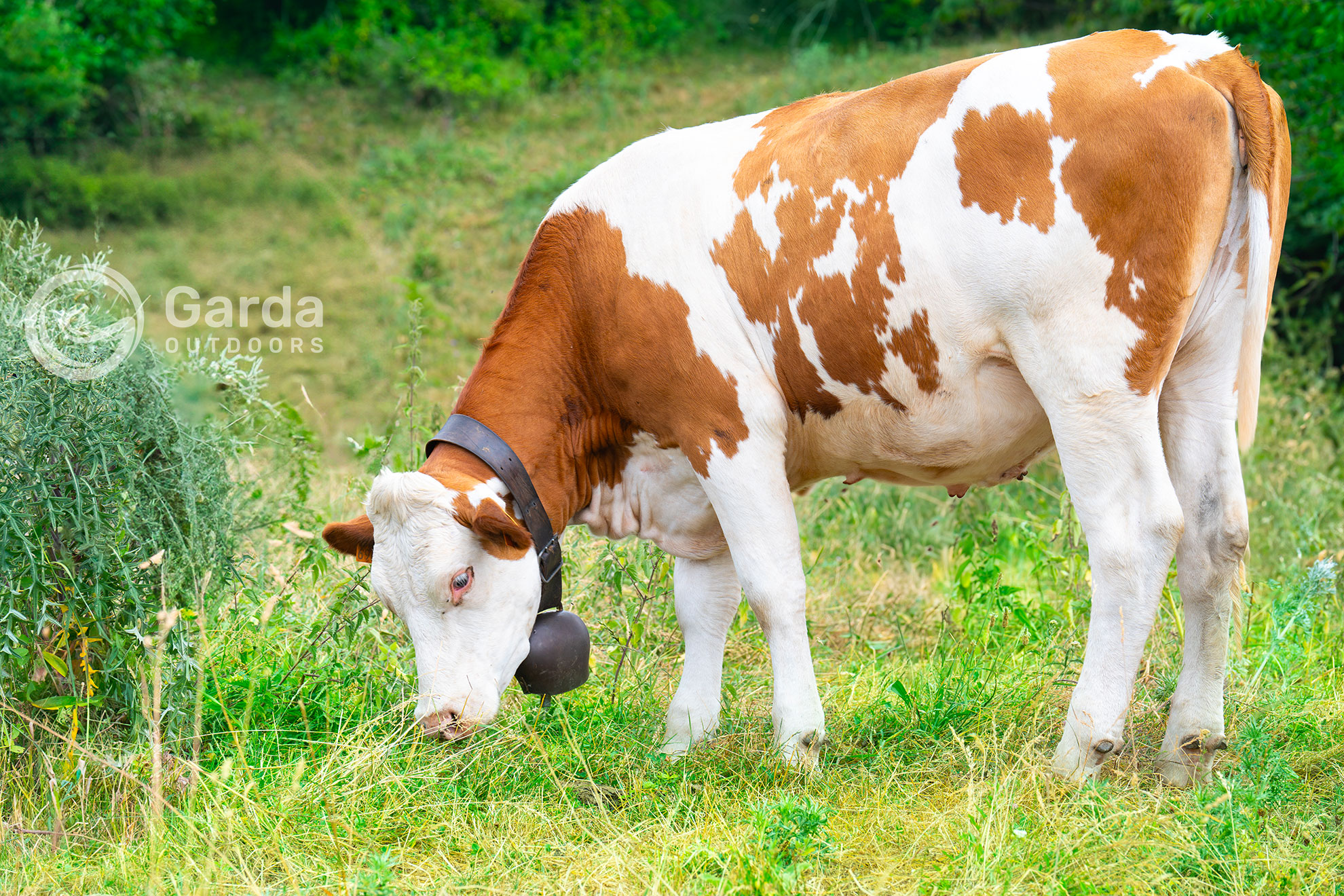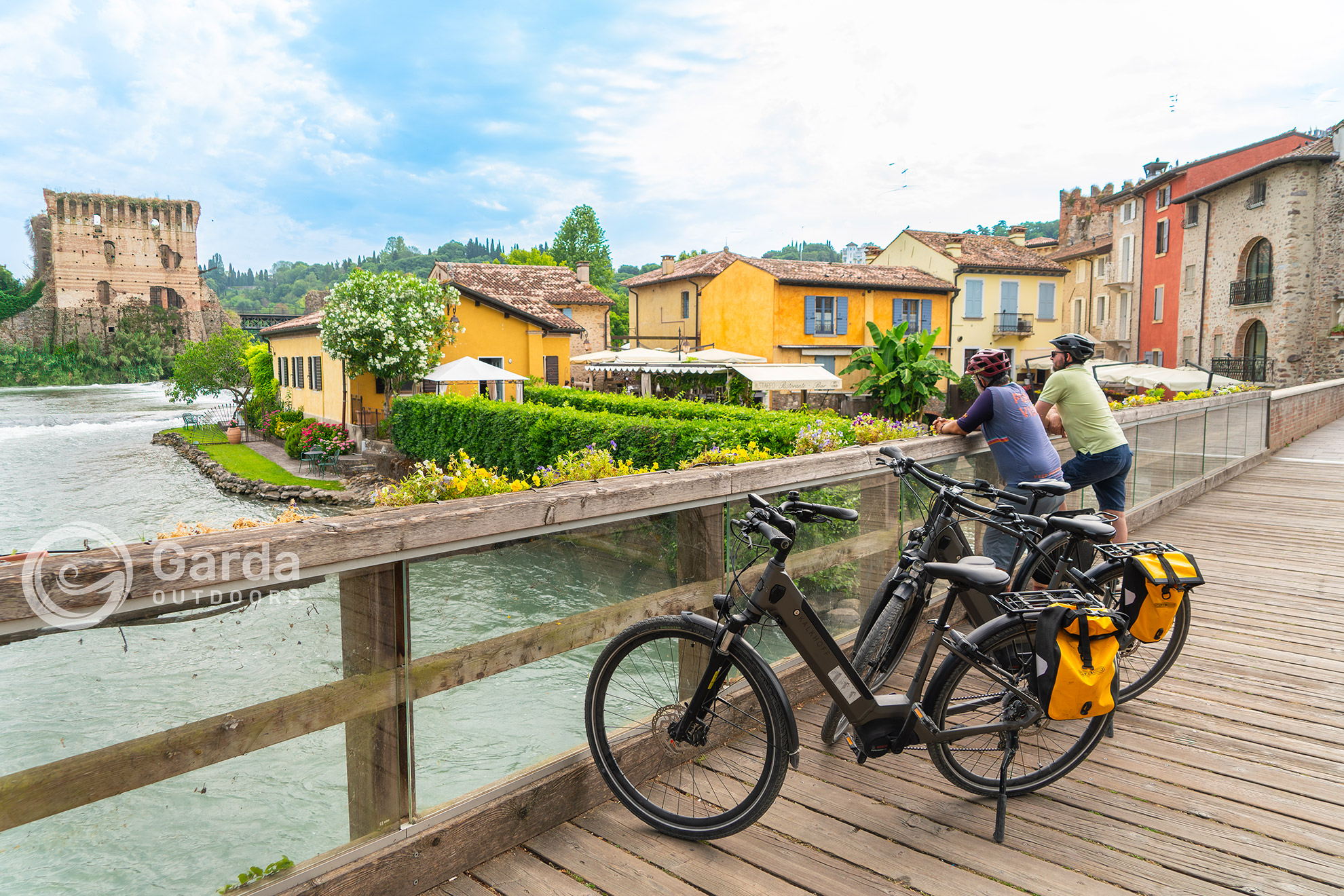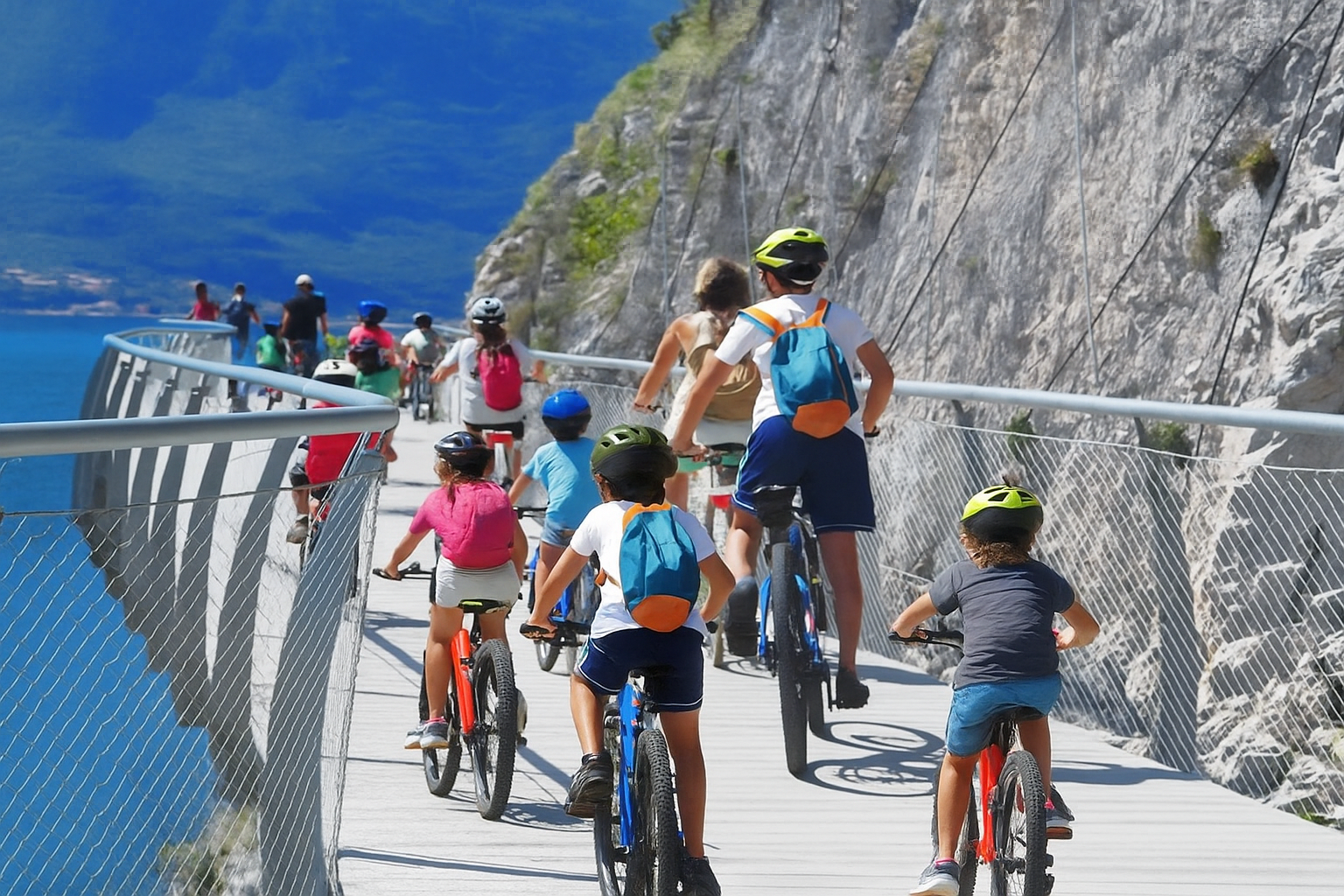The municipality of Lazise is a small village overlooking the south-east shore of Lake Garda. A quiet town where the atmosphere is relaxed while strolling along the lakefront or through its alleys, squeezed between ancient buildings and enclosed in the mighty walls.
The Municipality of Lazise is the first free municipality in Italy.
Yes, because Lazise, in the course of its history, has instead been a turbulent municipality: a history made up of battles, sieges and invasions; common feature of border towns. In fact, Lake Garda has always represented a natural border, as well as a political line of division between those who governed the Veneto and the Lombard territories.
But the autonomist claims of the population of Lazise date back to the Holy Roman Empire: in fact, in 983 the community asked Emperor Otto II to be able to enjoy very wide legal and fiscal autonomy. The Emperor, who wanted to maintain good relations with the population and take advantage of the territorial conformations for the defense of the troops, granted the required autonomy. For this reason, the municipality of Lazise sul Garda is considered the first free municipality in Italy.
Since then, many governments have succeeded: the Scaligeri, the Visconti, the Serenissima Republic of Venice and then the Gonzagas, Napoleon, the Lombardy-Venetia and finally, after the third war of independence in 1866, definitively the Kingdom of Italy.
All left the original privileges to the community and thus allowed the country a rather rare development and wealth. Lazise still preserves many interesting signs of its historical events and its prosperity.
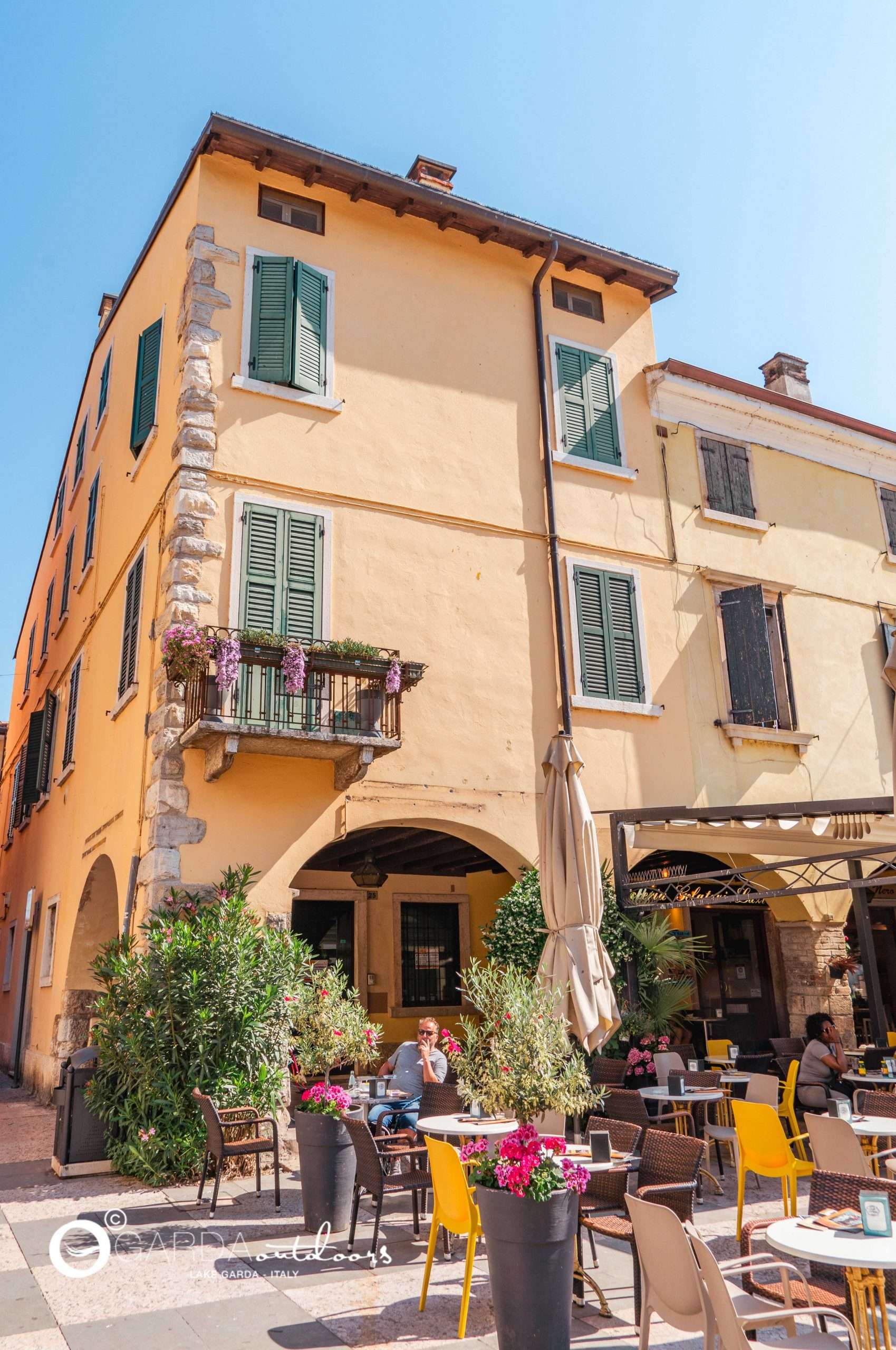
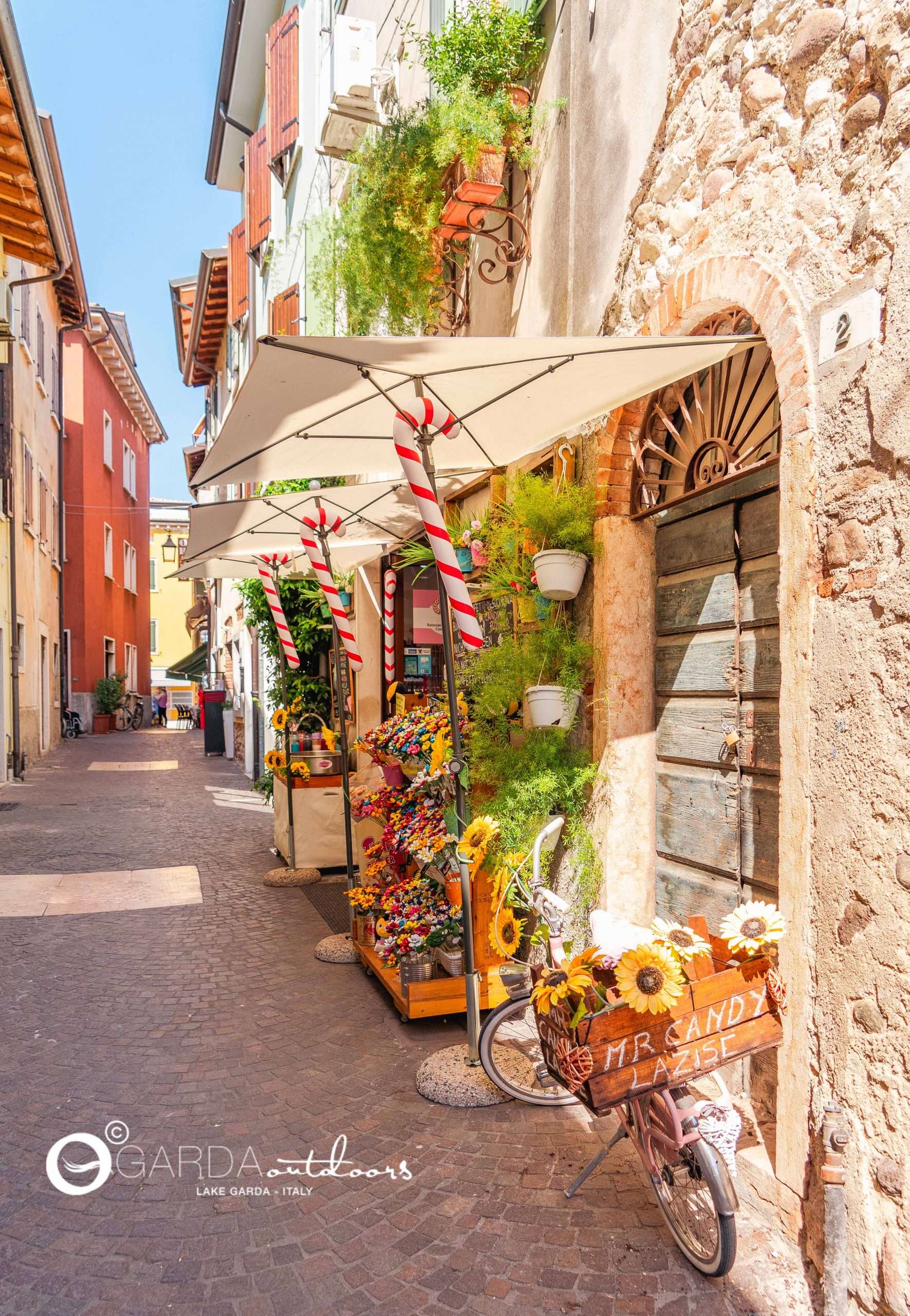
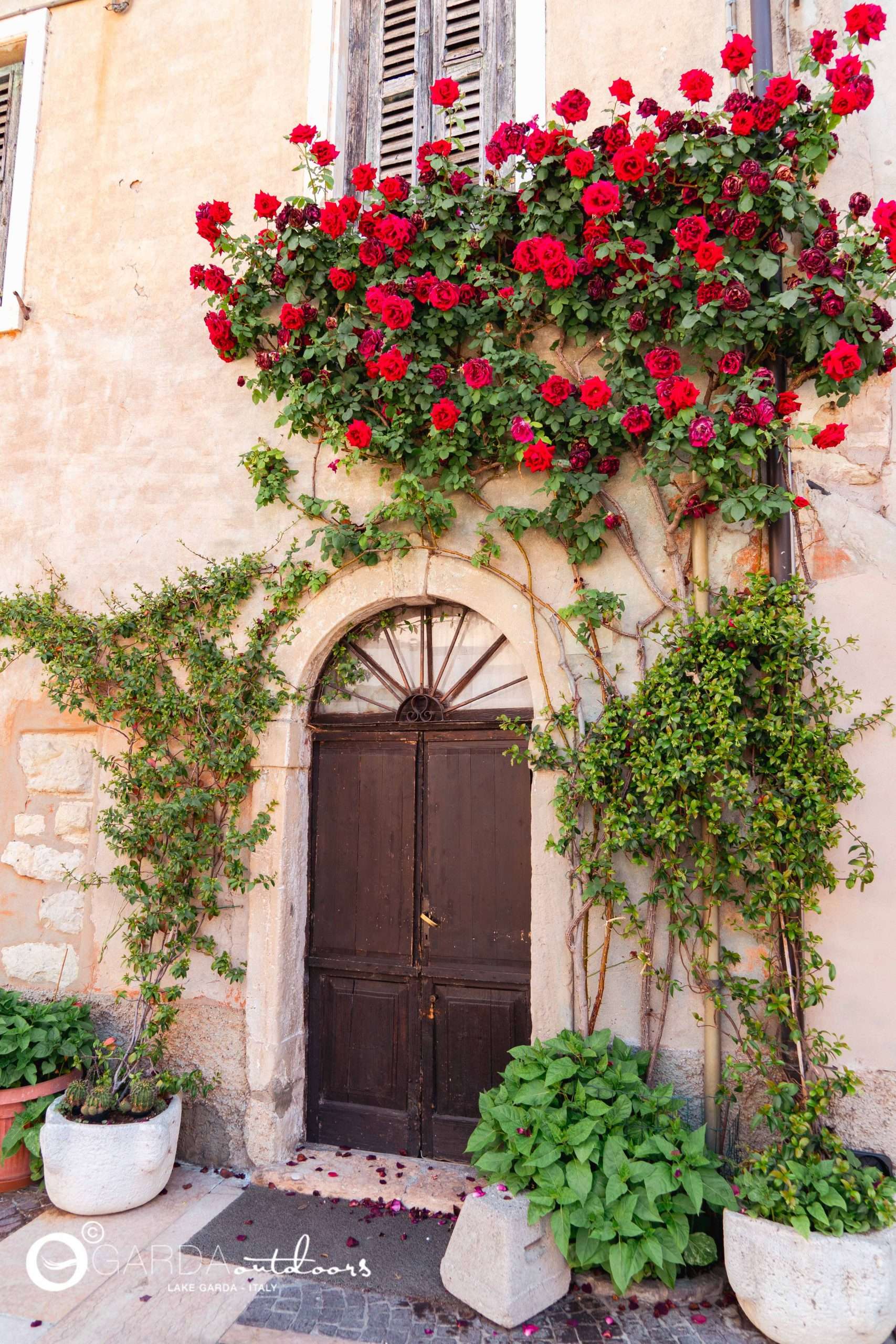
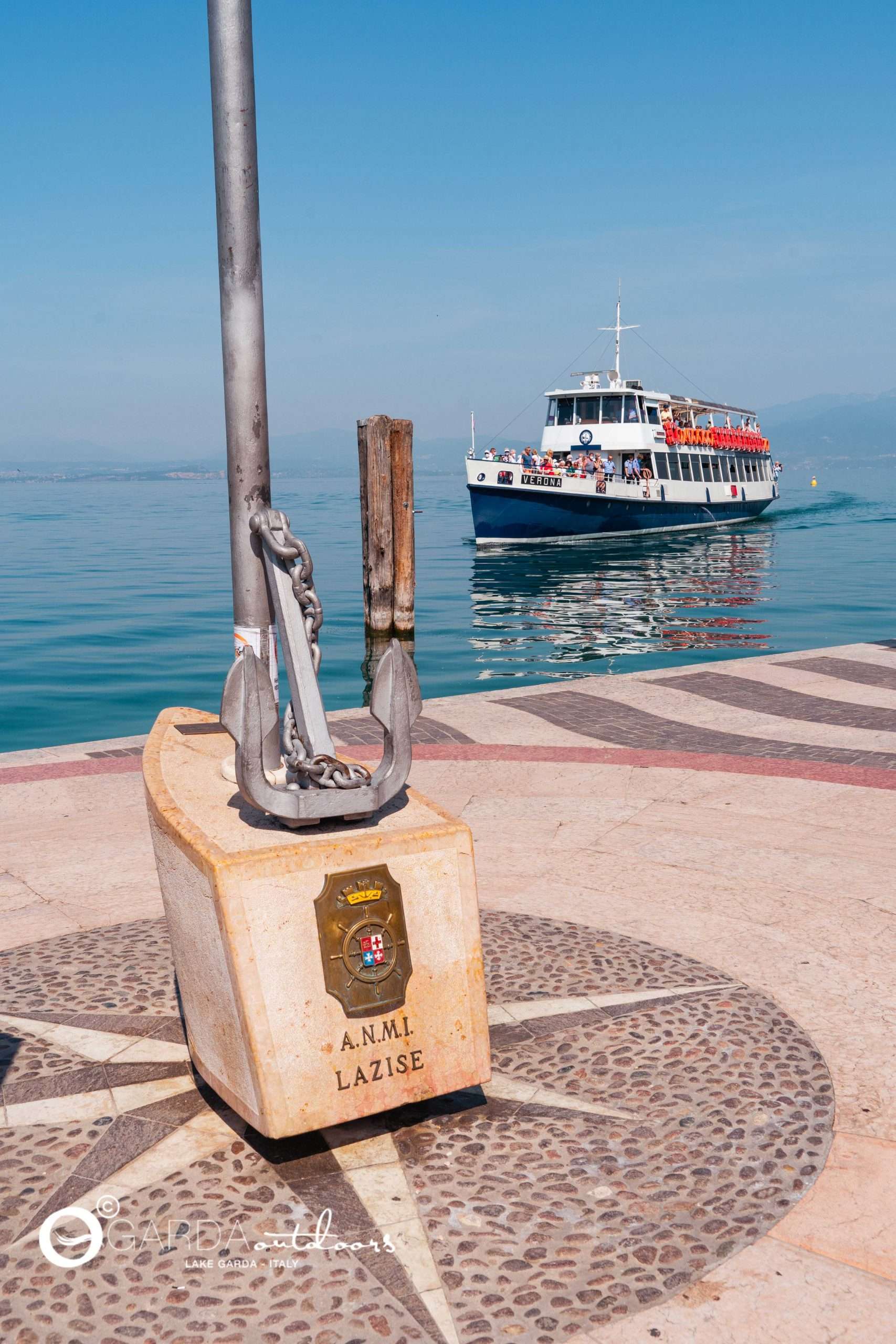
What to do and see in a day trip in Lazise.
The Scaligero Castle of Lazise.
The most important and evident is undoubtedly the Scaligero Castle. The construction of the first walls began shortly before the year 1000, precisely following the autonomy granted to the village, but the current fortified structure is the work of the Scaligers who completed it in 1381.
A large part of the original structure remains today: thirteen towers and the three access gates to the city; Porta San Zeno, for access from the east, Porta Nuova for those arriving from the north and Porta Lion (so called for the emblem of the Serenissima) for access from the south. All had drawbridges over a moat, which today has almost completely disappeared.
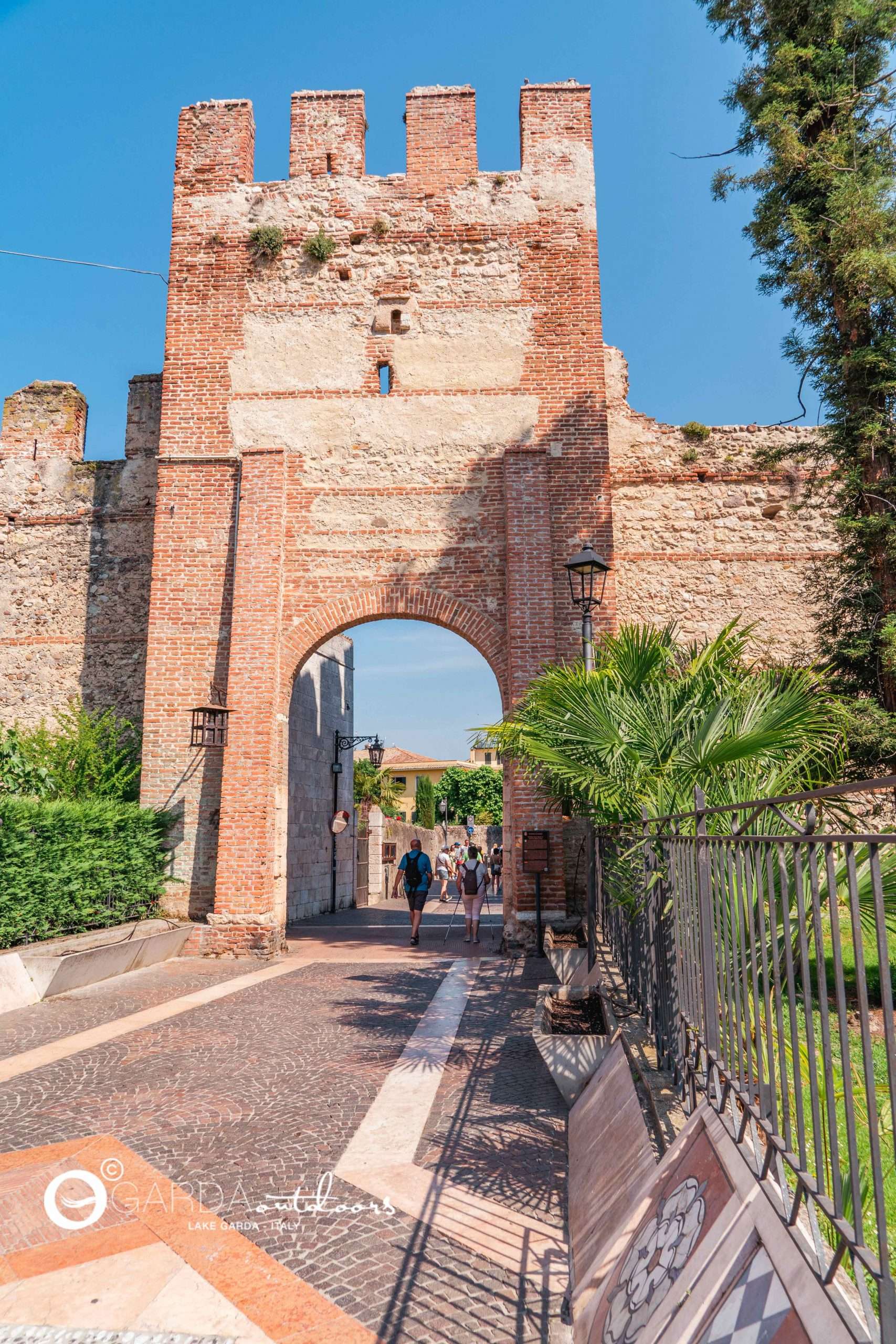
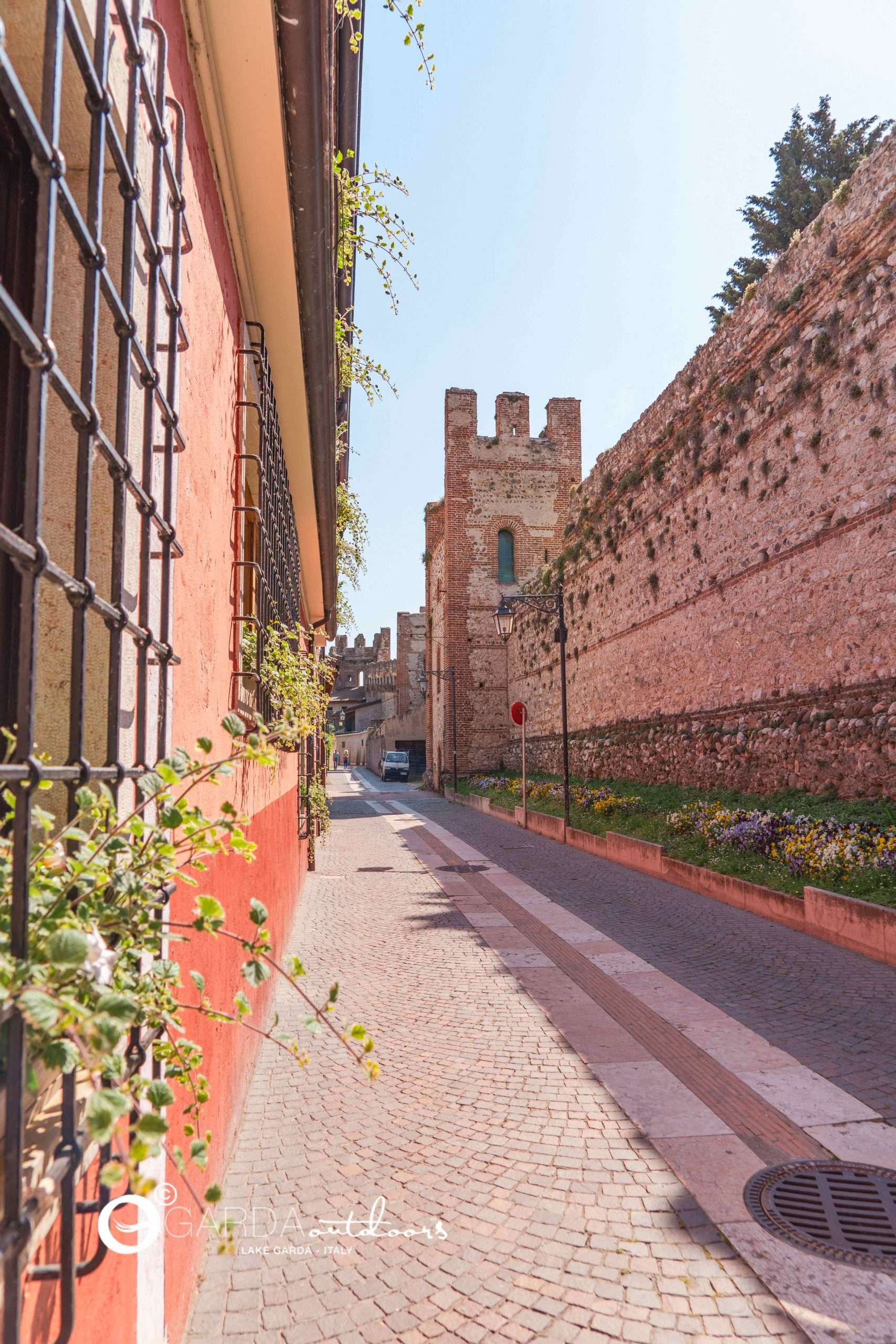
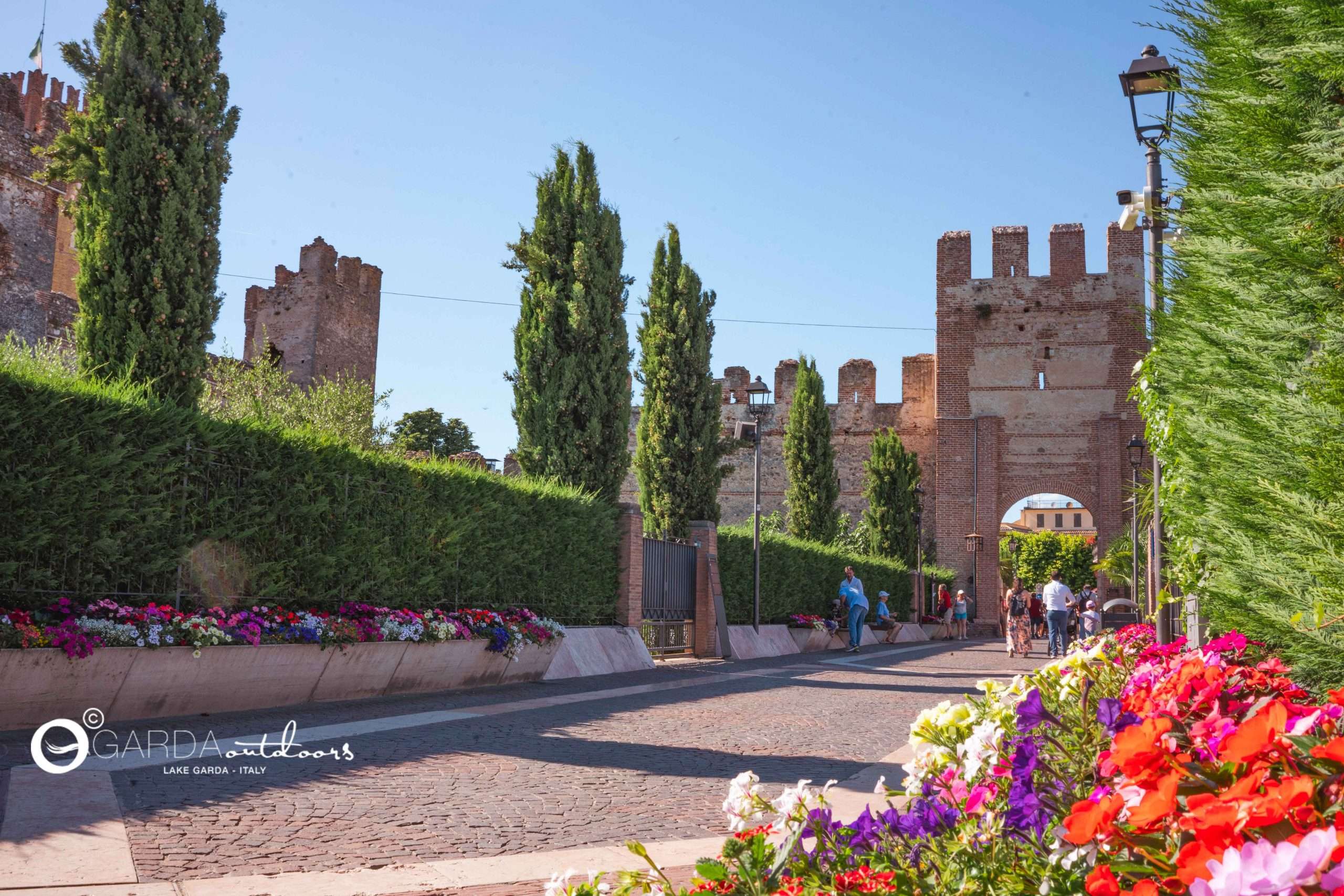
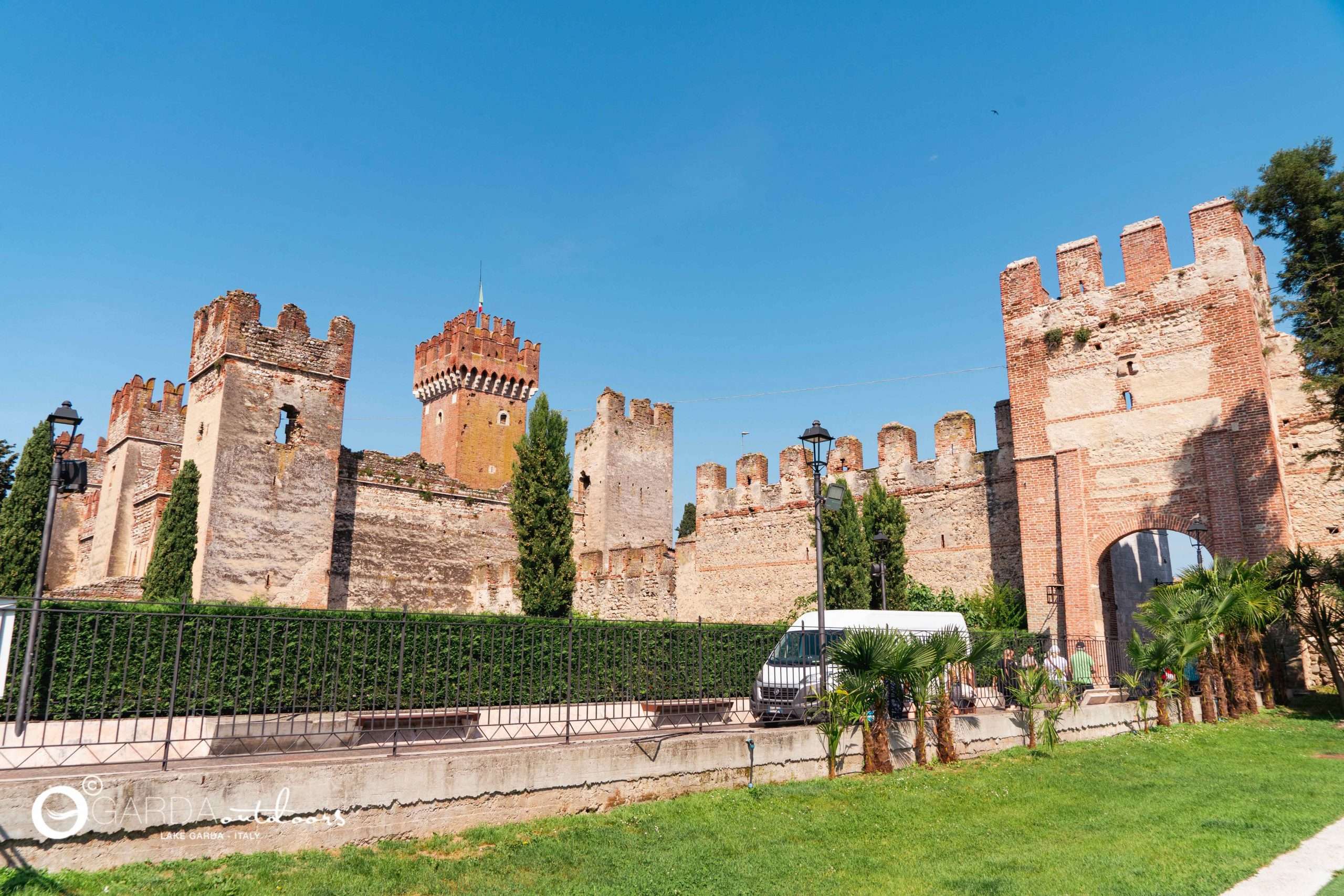
The town square of Lazise.
Entering from any of the doors, just walk through a few alleys to arrive in the beautiful Piazza del Comune of Lazise, paved in a checkerboard pattern. Around, the arcades of the ancient buildings now house the many tables of bars and restaurants. Relaxed off-season atmosphere, which becomes a continuous party during the warmer months.
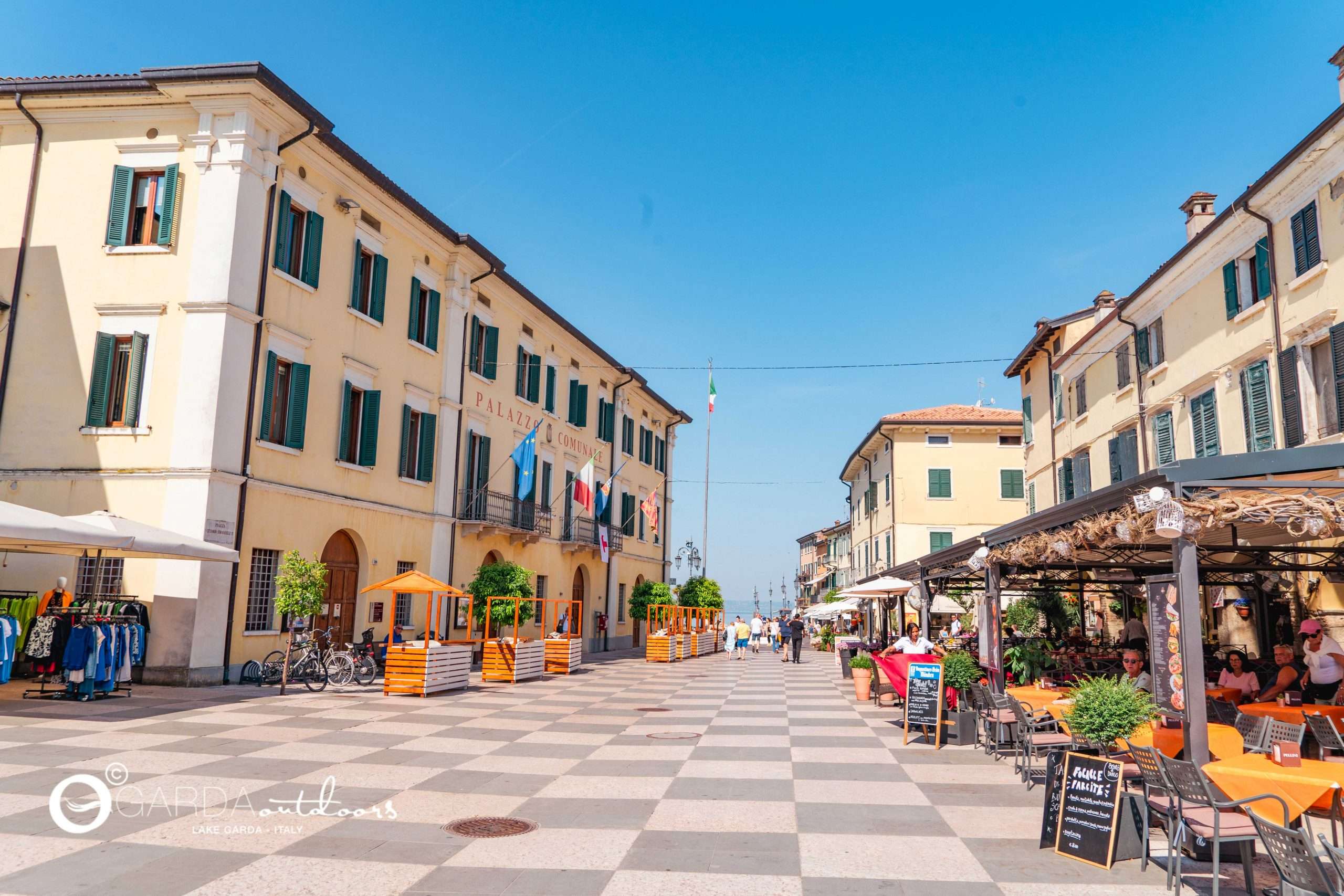
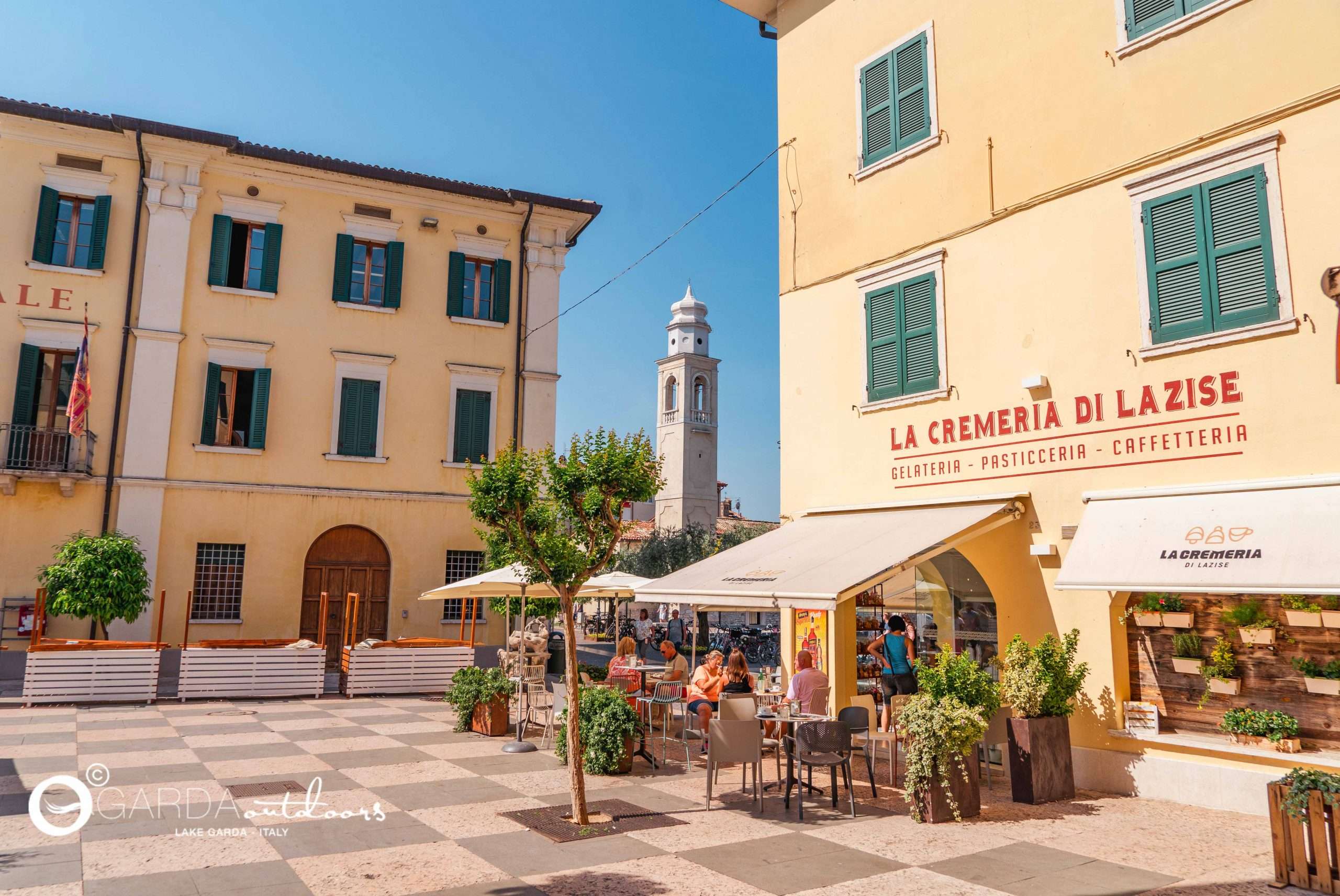
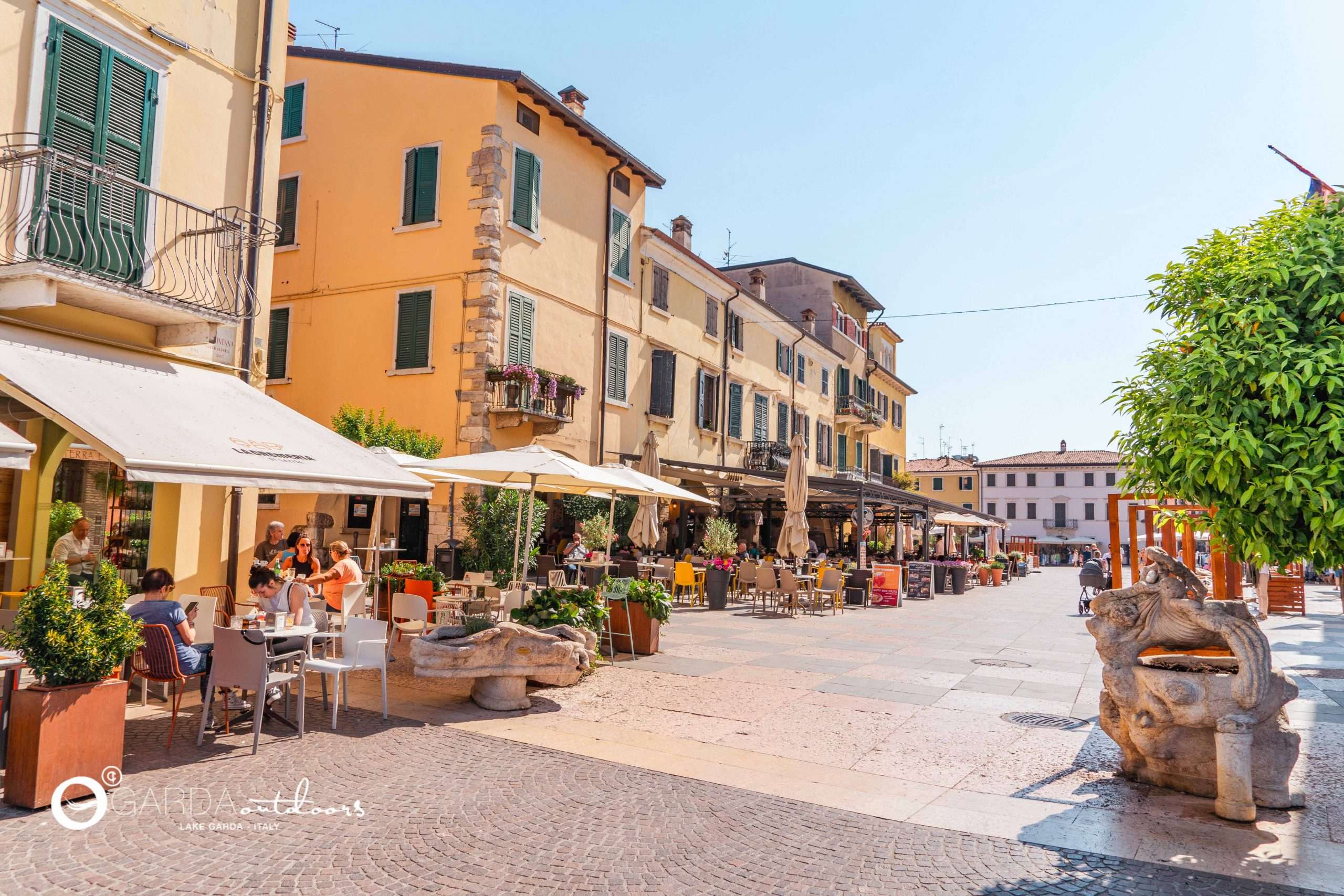
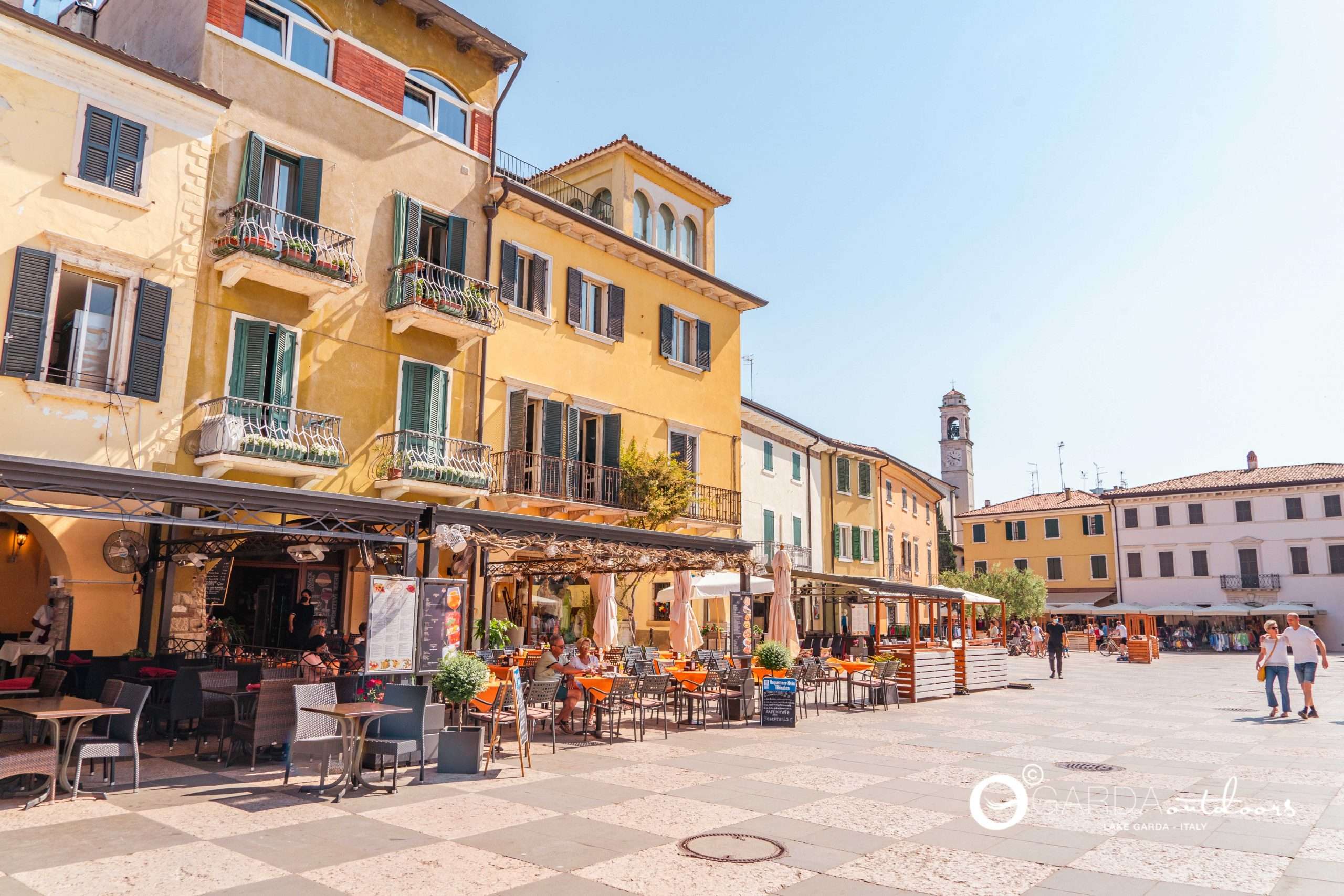
The Old Port.
Right in front of the square opens one of the most beautiful corners of the town: the Porto Vecchio.
Its construction began before the year 1000, but even in this case it was the Scaligers who completed it, around 1300, with its current features. Today this quiet and sheltered body of water is home to the small colorful fishing boats, in a postcard image.
On one side of the port the old houses follow one another while on the opposite side you can immediately notice the ancient Romanesque church of San Nicolò and the Venetian Customs.
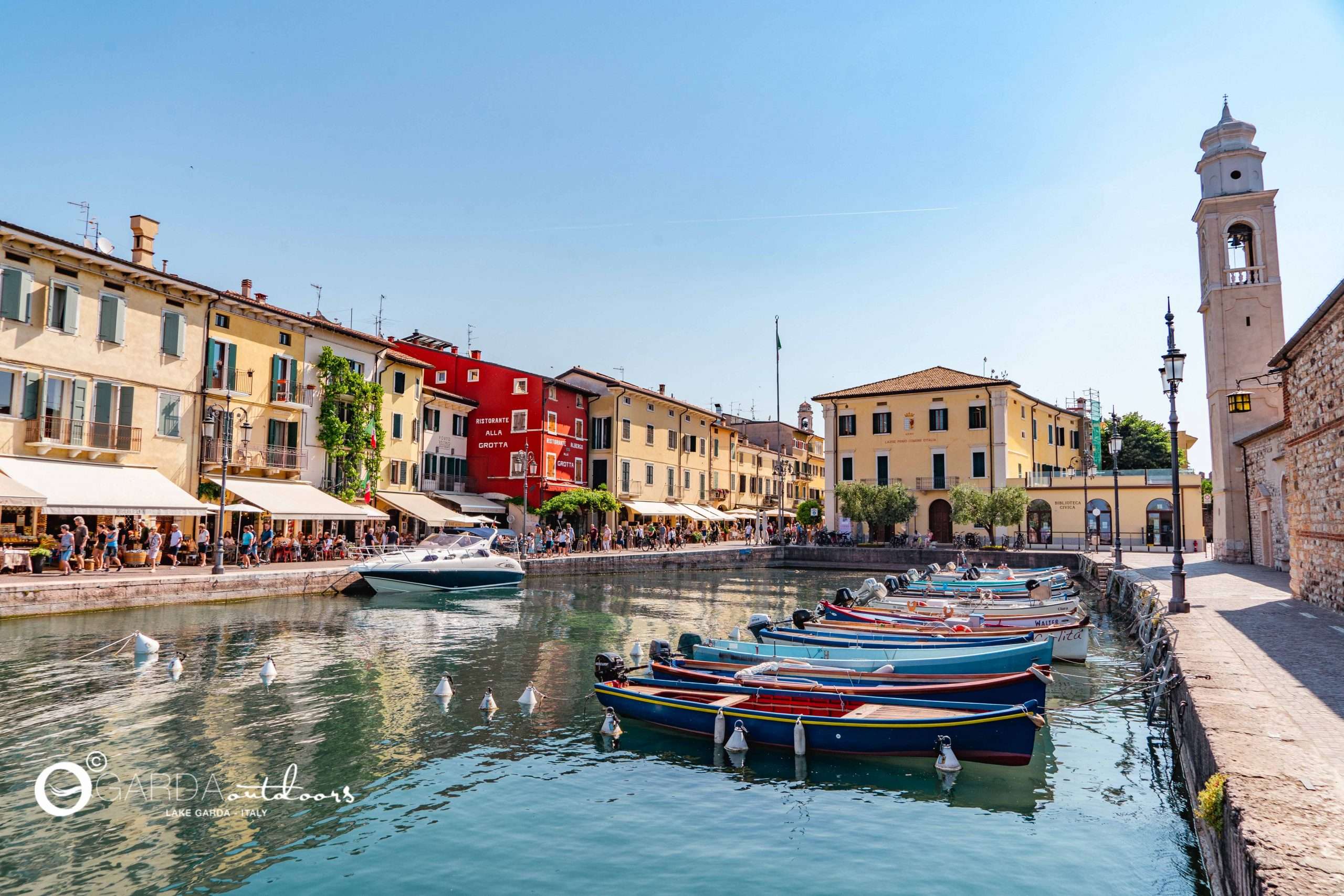
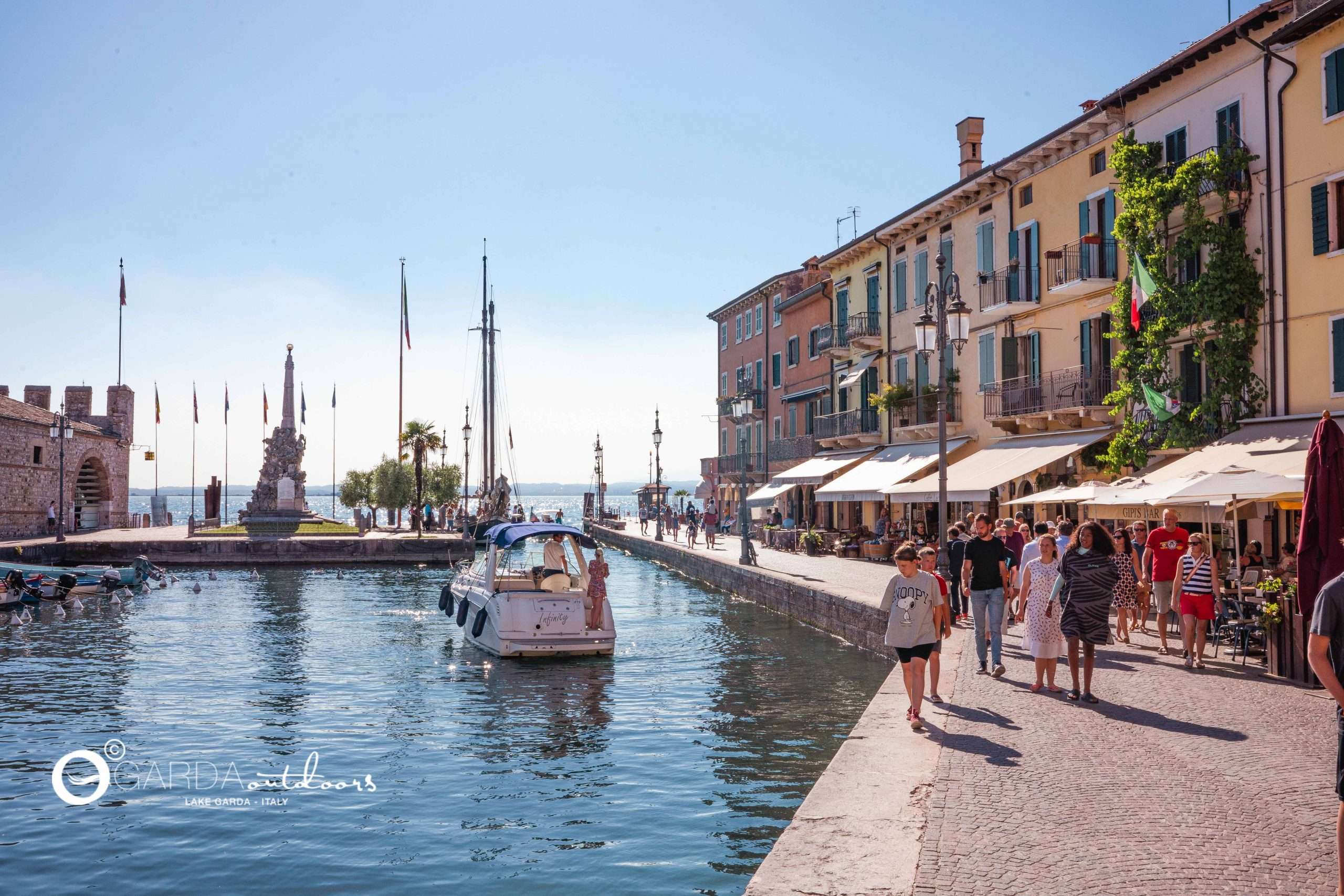
The lakeside promenade and the statue of “The Little Mermaid of the lake”.
The scenic lakeside of Lazise has a paved paving with waves, just like those of the lake. There are shops, bars, restaurants and hotels which then wedge themselves into the picturesque alleys of the historic center.
Also on the Marconi lakefront, towards the north, there is also the bronze statue created by the architect Cecchini in collaboration with the sculptor Matteo Cavaioni, which represents a female figure jumping on a rock coming out of the water on a wave. Do not miss a souvenir photo in his company!
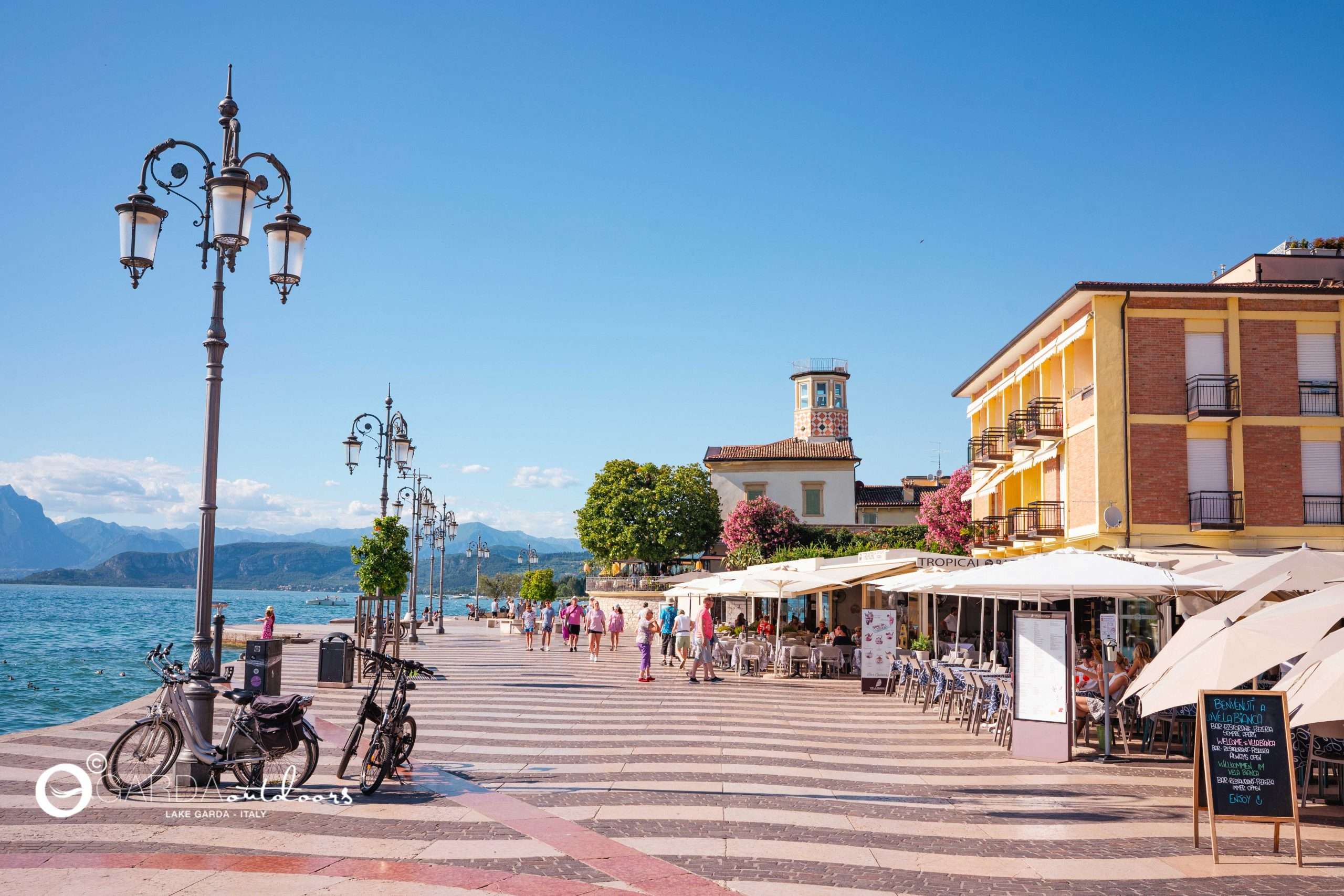
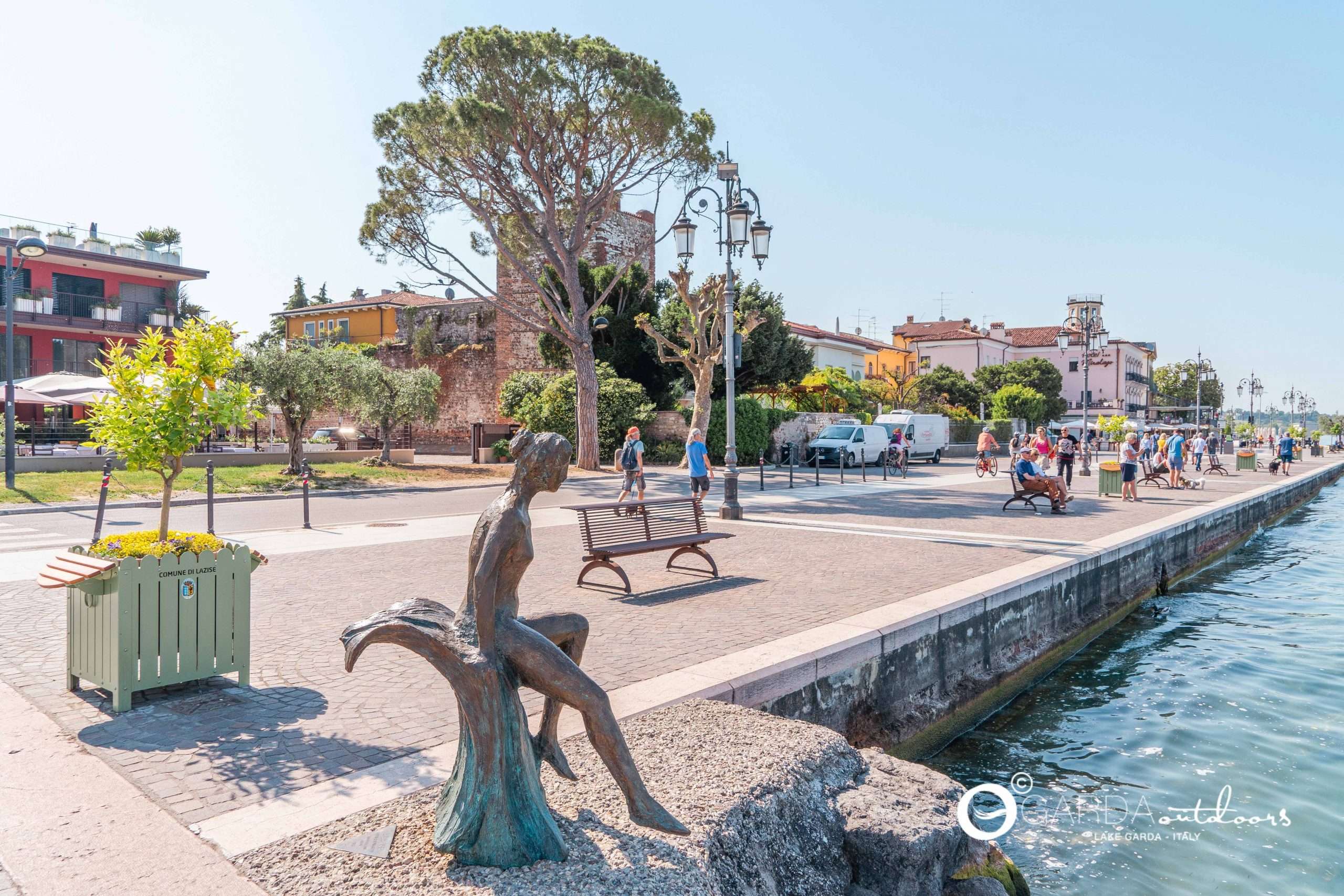
Dogana Veneta.
The Dogana Veneta building stands out in the old port of Lazise. The Garda, as we have already said, has always been a natural border and the whole Veronese shore is a continuous line of fortifications, castles and defensive walls.
Of fundamental importance, both during the Scaligeri Lordship and in the Republic of Venice, was the building that housed the Customs Office. Over the years it had various functions, including the manufacture of saltpetre (to produce gunpowder) and the custody of the powerful naval fleet of the Republic of Venice. Today it hosts both weddings and events and congresses; very impressive both for the architectural structure of the building and for the position right in front of the lake. For more info click here.
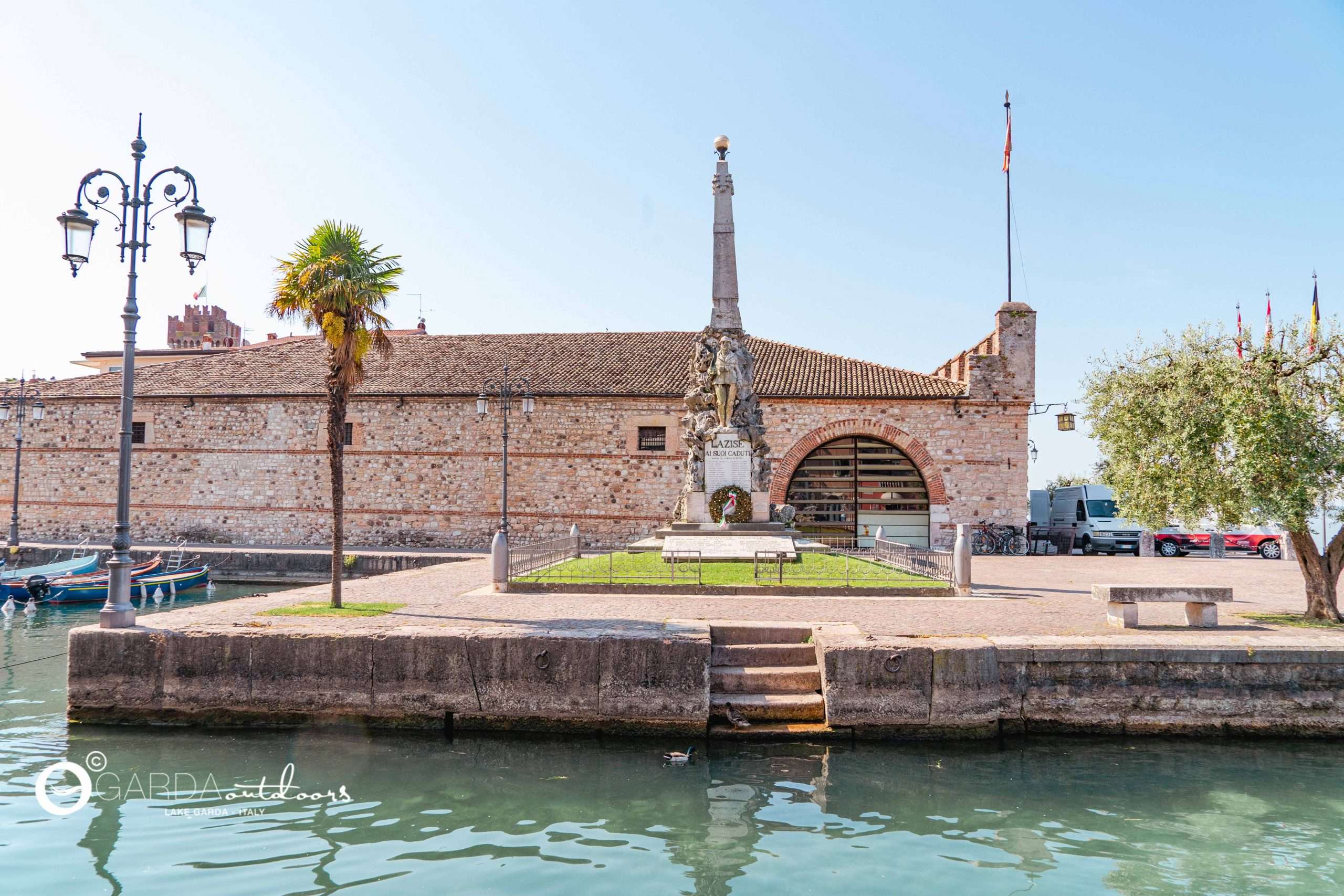
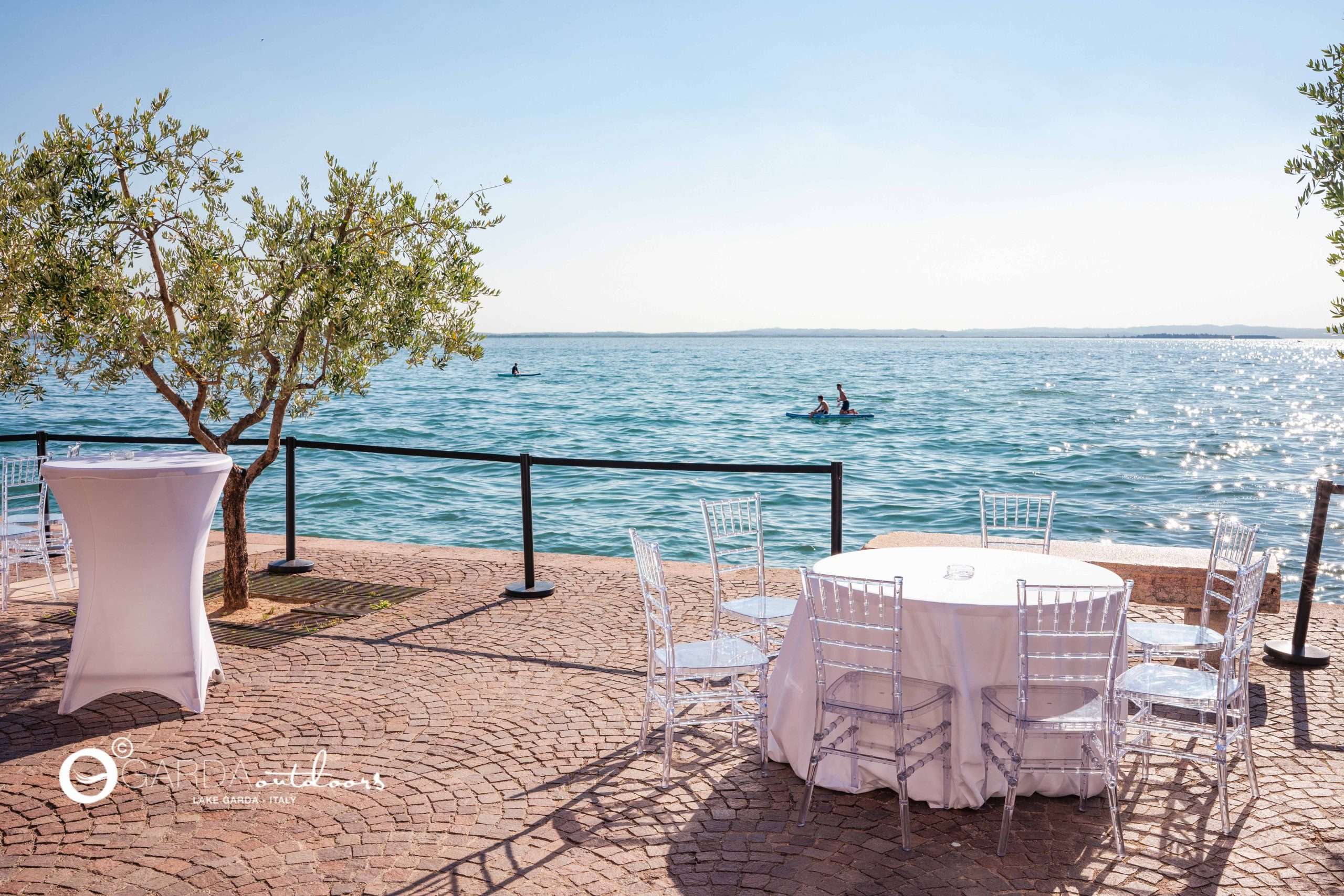
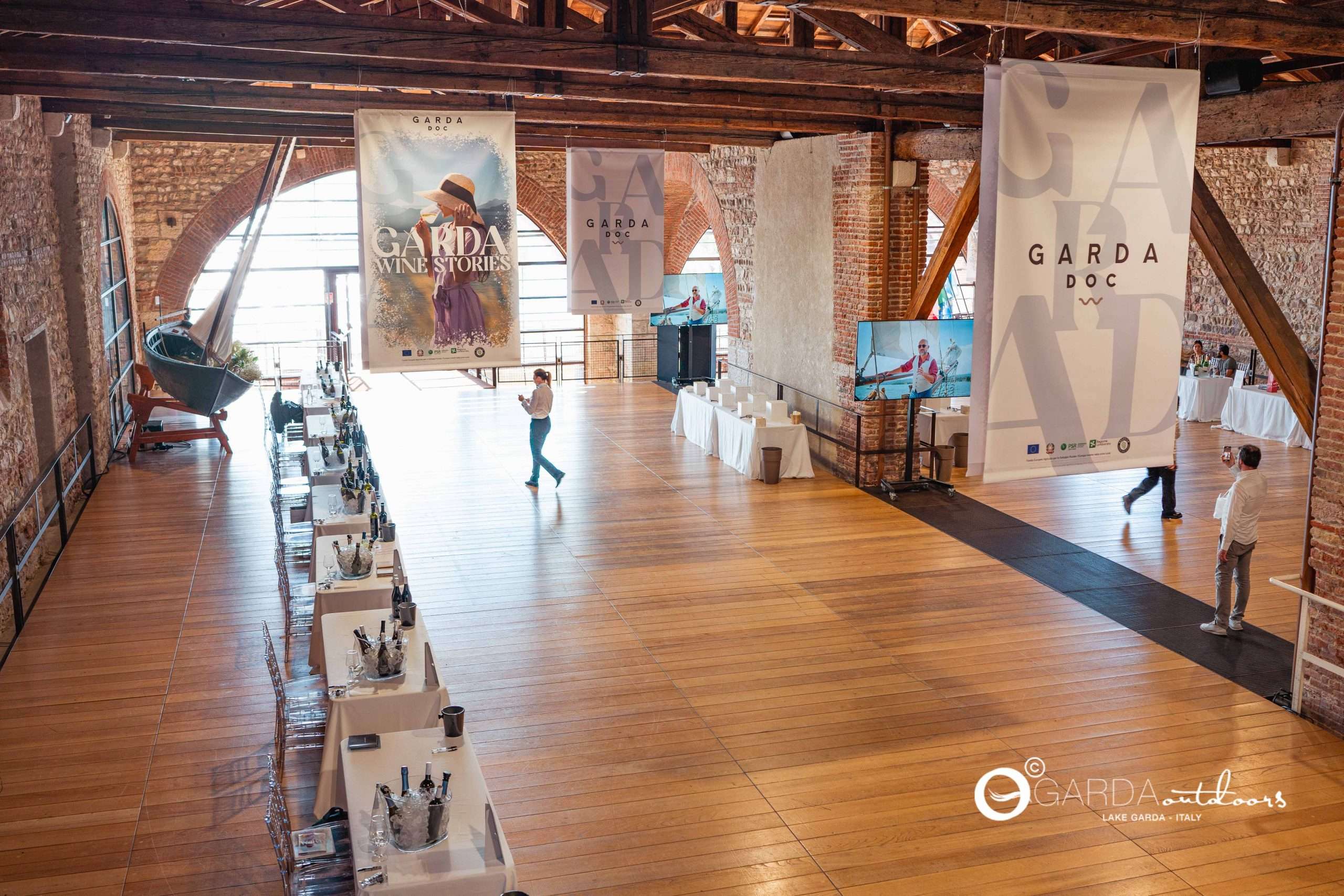
Romanesque church of San Nicolò.
It is said that Saint Nicholas, the saint born in Patara in Asia Minor, one day sailing to the Holy Land, predicted and then calmed a furious storm with his prayers. Thus it was that after his death, which occurred in the year 330, he became the patron saint of waters and sailors and many cities and maritime and lake towns erected churches in his honor. The inhabitants of Lazise, who drew their earnings from fishing and navigation, also built the ancient Romanesque church that still overlooks the port today, to protect their waters and their trade.
The building was built in the century XII by the Guild of Originals, the privileged class which, having founded the Municipality, held the main administrative offices. The restoration work in 1953 brought to light the most precious and interesting artistic testimony of this ancient church: some fragments of the 14th century frescoes, which once covered almost entirely the walls of the church.
The ancient vestiges and artistic testimonies of the church, together with its charming position on the Garda dock, make it a constant destination for faithful and tourists, still attracted today by the flavor of the ancient and simple beauty of its architecture.
Church of Saints Zenone and Martino.
In the historic center of Lazise, near Porta San Zeno, is the majestic church of Saints Zenone and Martino.
A place that can take you back in time, since its white facade together with the decorated columns is reminiscent of a temple of ancient Rome. Another peculiarity is its tall white square bell tower with the clock underneath. The first documents that mention the existence of the current building date back to the twelfth century.
The church is in perfect neoclassical style, as evidenced by the columns supporting the entablature, ending with the Corinthian-style capitals. To unite the old and the new, inside there are two side altars that date back to the previous church. In addition, there are some works such as: the altarpiece of San Martino which is found in the choir, the Via Crucis, the altarpiece of the Sacred Heart and the Christ.
The staircase, still present on the outside, was built at the end of the nineteenth century to level the floor of the church and the three statues found on the pediment of the facade (depicting San Martino, Fermo and Rustico). It is a very austere church, which although it does not present particular sumptuous architectural elements, is appreciated by many visitors and requested for their wedding.
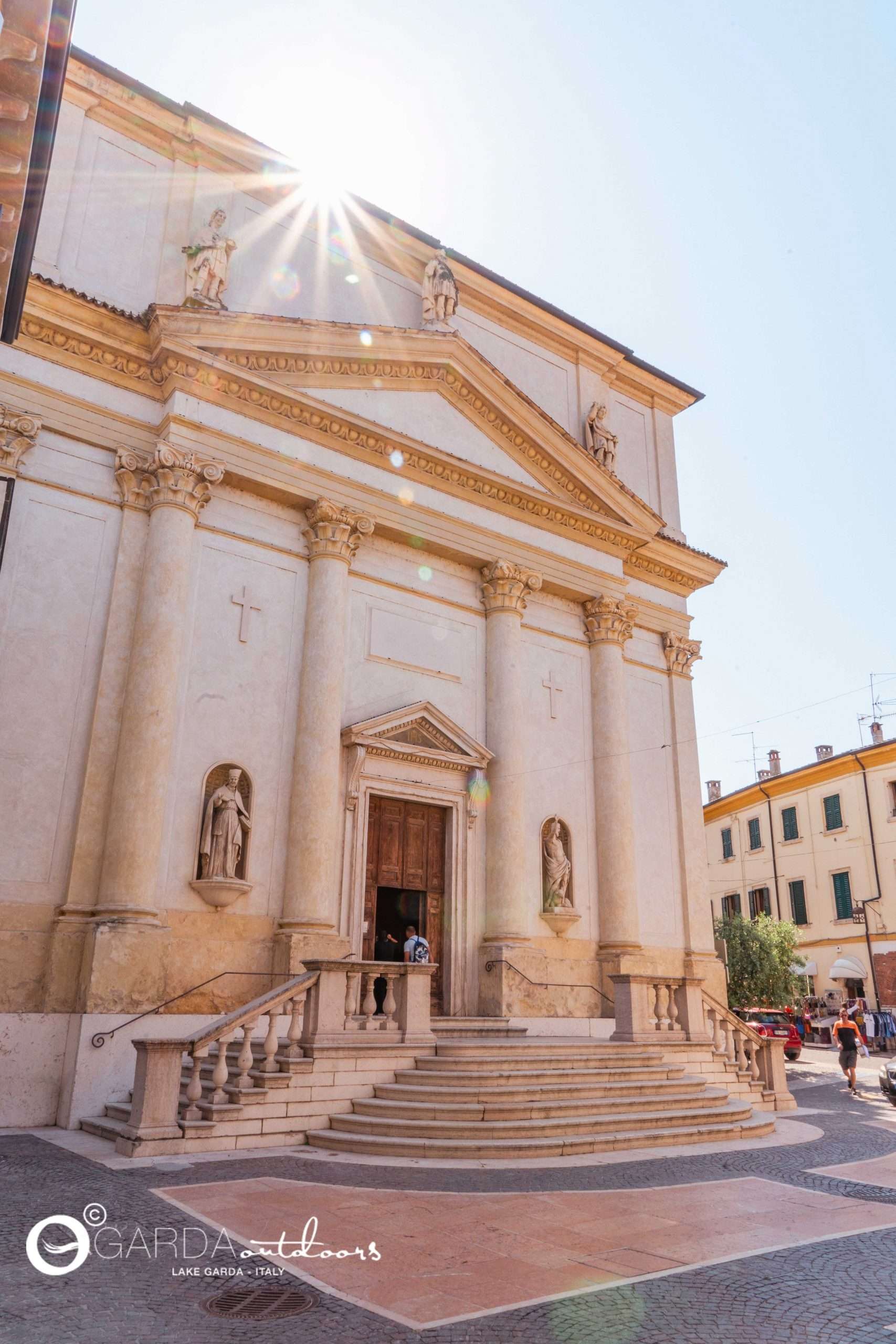
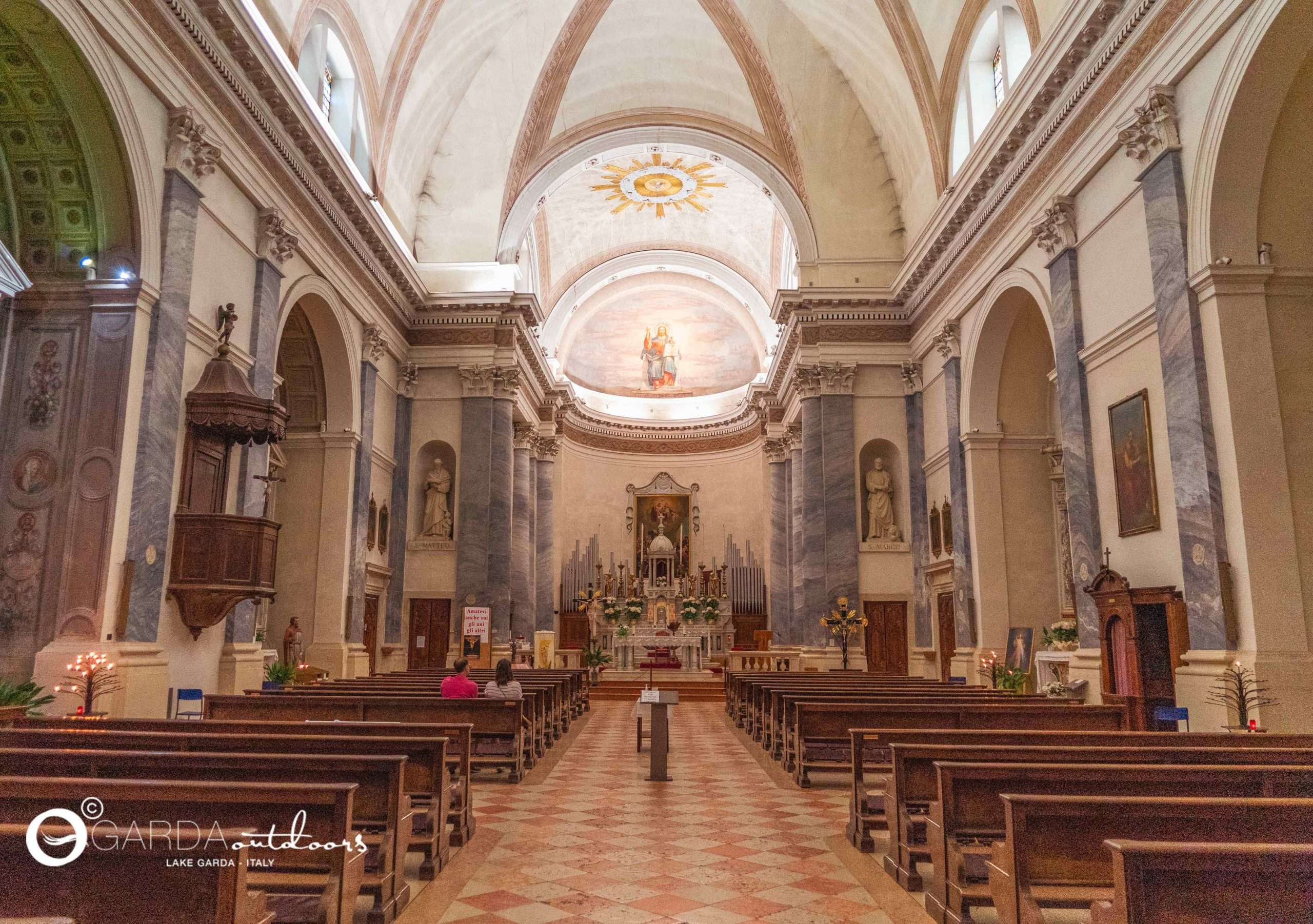
Boats and ferries.
From Lazise it is possible to reach the other towns of the lake by means of the boats provided by Navigarda. Tickets can be purchased on the day of travel at the ticket office located near the pier at Porto Vecchio. For info on timetables and tickets click here.
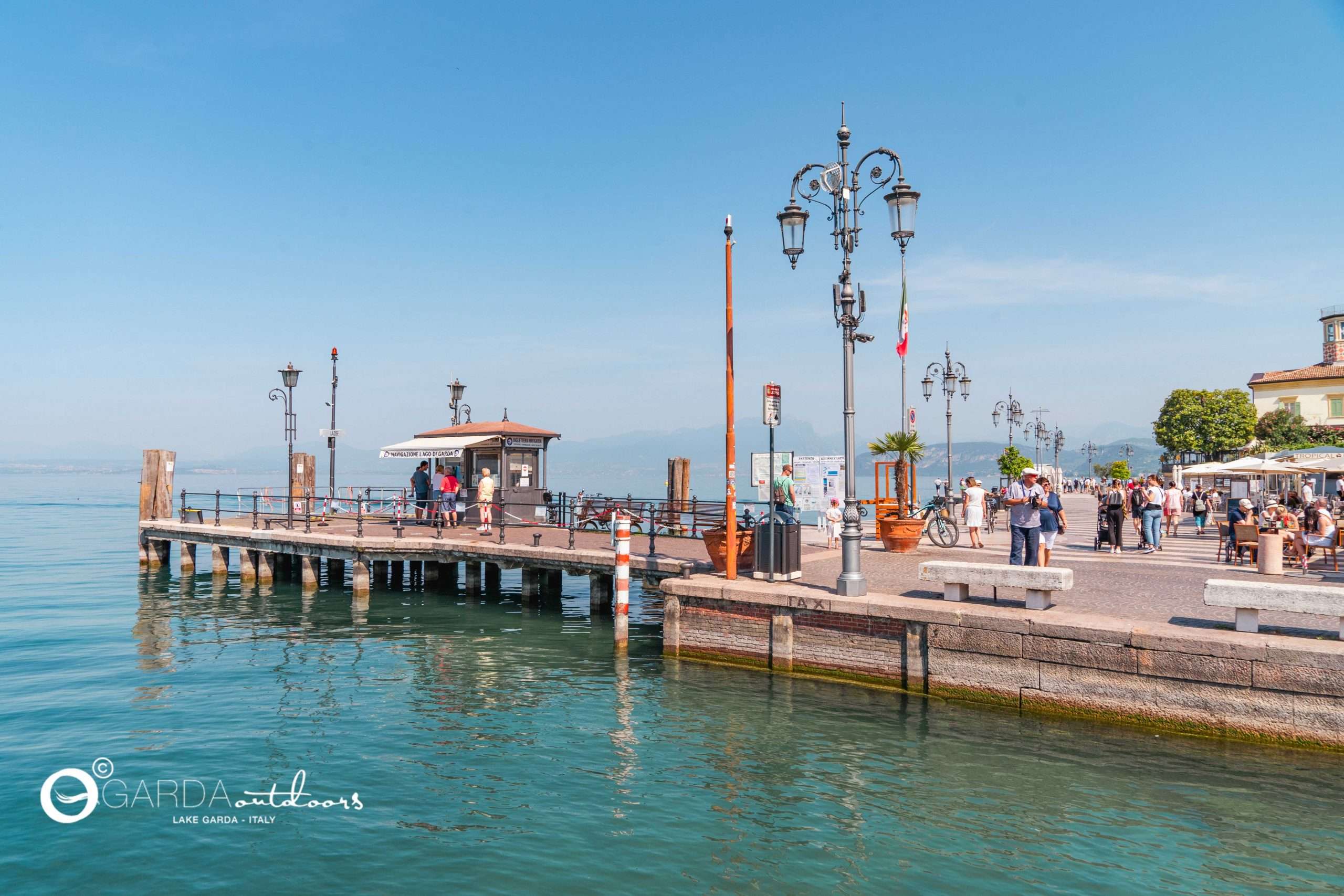
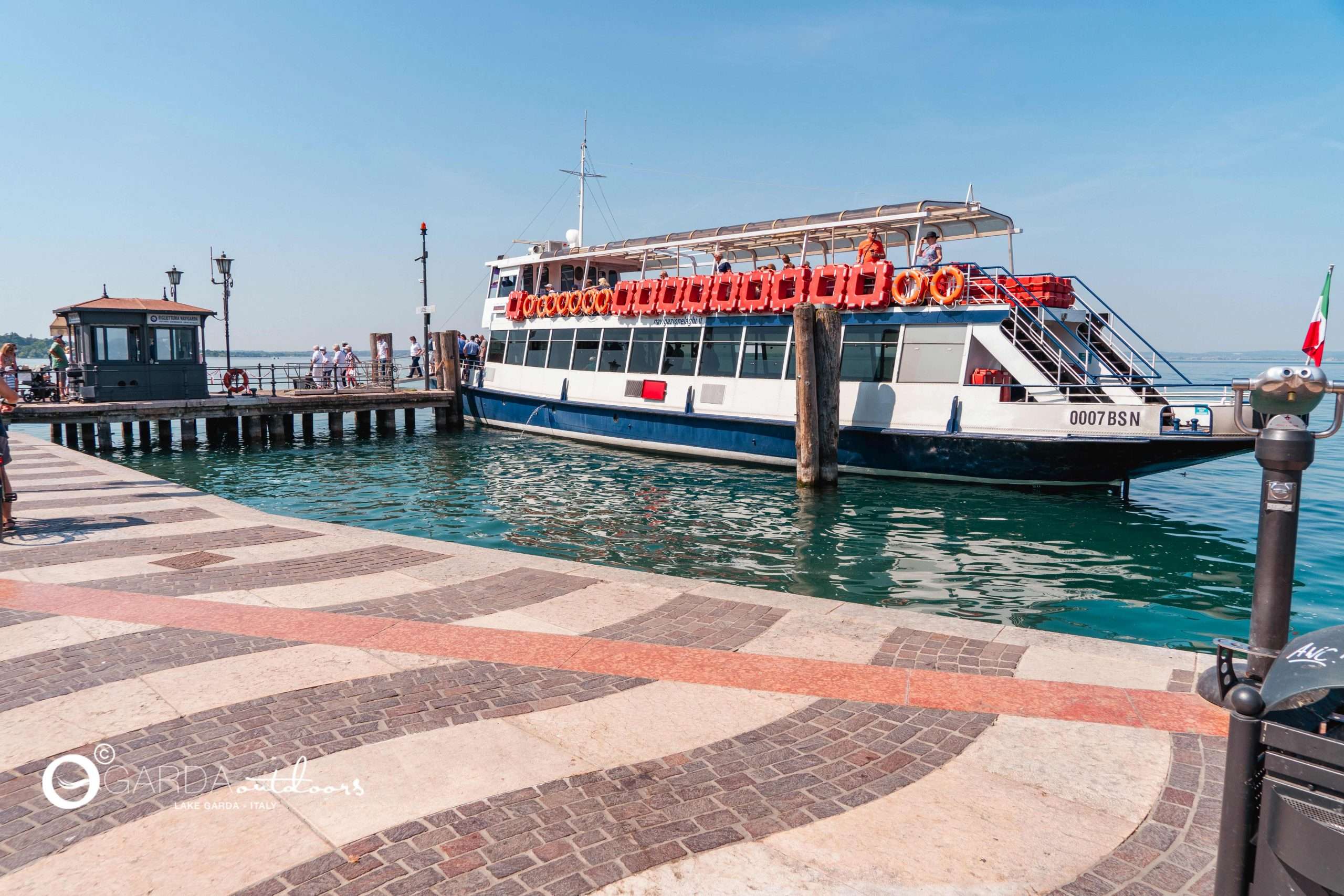
What to do and see around Lazise.
“Villa dei Cedri” thermal park in Colà di Lazise.
The “Garda Thermal Park of Villa dei Cedri” is a “natural SPA” of 13 hectares surrounded by rare plants and centuries-old trees where there are lakes, pools with whirlpools, fountains and waterfalls, all with hot thermal water that flows from two slopes to 200 and 160 meters deep. In the main lake and in the swimming pool, the temperature of the thermal water is maintained at around 33-34 ° C with pools that even reach 37- 39 ° C.
The water of the Villa dei Cedri Thermal Park is composed of bicarbonate, calcium and magnesium with a significant presence of silicon, as well as other minerals. It is alkaline water with a very high pH, around 7.9, therefore with anti-inflammatory effects. The Ministry of Health has recognized the therapeutic properties of the thermal water of Villa dei Cedri for bathing and demonstrating its effectiveness, among other things, in the treatment of arthro-rheumatic diseases, in motor rehabilitation and in dermatological diseases. For the price list and timetables of Villa dei Cedri click here. If you want to know all the thermal parks of Lake Garda, click here.
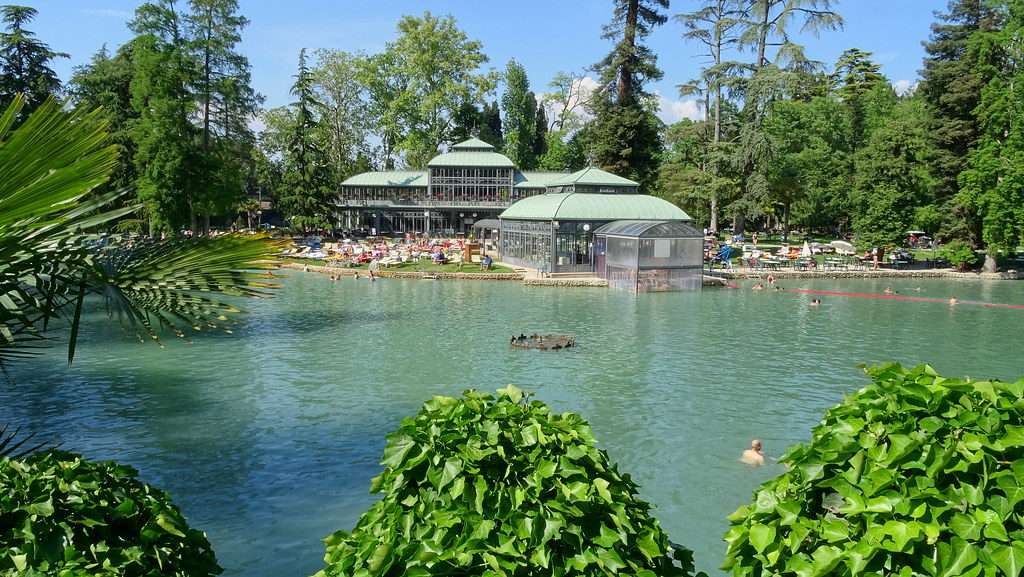
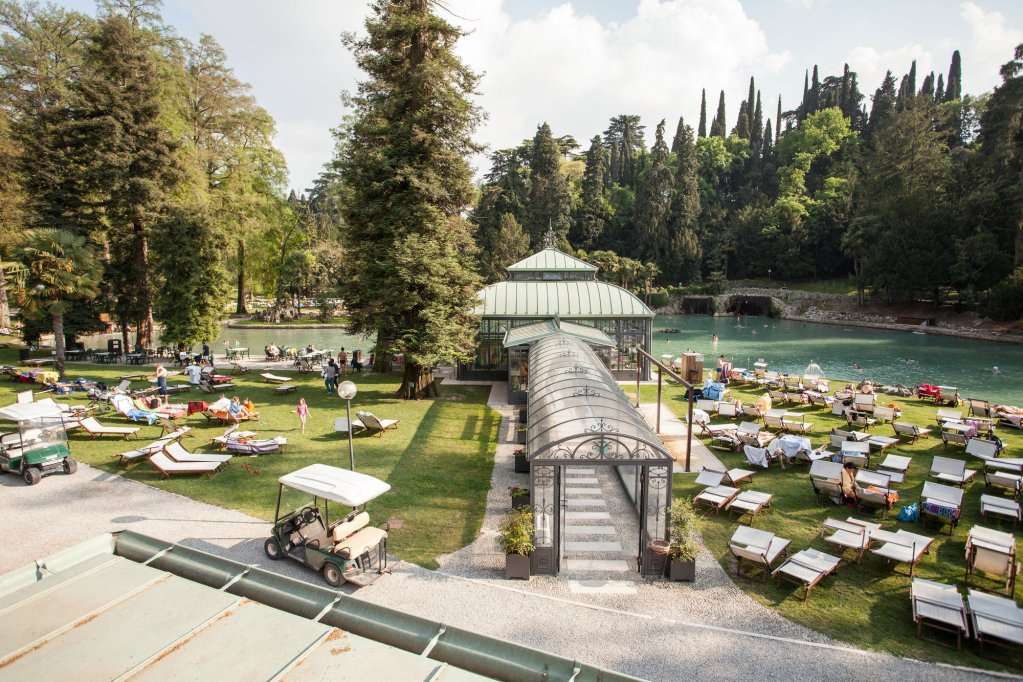
Amusement parks and water park.
Medieval Times restaurant & show – Movieland The Hollywood park – Caneva Aquapark.
Other churches.
Church of San Giovanni Battista (Piazza Chiesa – Pacengo – VR): the current Church of San Giovanni Battista dates back to 1792 and was designed in the neoclassical style by the architect Leonardo Rossi who designed it with a temple facade, composed of four style semiles ionic; inside, the church has a single rectangular nave punctuated by Corinthian pilasters and semi-columns, the flooring is in squares of red Verona marble and Botticino marble; there are various canvases made by Pio Piatti depicting the Four Evangelists, the Nativity and the frescoes on the Life of John the Baptist. The bell tower is flanked on the eastern side of the building.
Church of San Giorgio Martire (Via Castello – Colà di Lazise – VR): the church of San Giorgio Martire was built between 1857 and 1762 in a neoclassical style using the remains of the ancient Roman chapel of Santa Maria which probably dated back to to the XII century and was built inside the castle of Colà. It depended on the Pieve di Sandrà until the middle of the 16th century when, for safety reasons due to the descent of the Lanzichenecchi between 1526 and 1530 and greater convenience for the population, it became the parish seat under the title of Santa Maria and San Giorgio. Inside there are 5 altars and some altarpieces including St. George with the Virgin and the Last Supper by Ugolini.
Palù dei Mori Oratory (Località Palù dei Mori – VR): Palù dei Mori is a manor court like so many that arose in northern Italy in the 15th century. These courts are often also annexed to oratories with public functions, where the liturgy was celebrated both for the noble owners and for the workers of the court. The oratory of Palù dei Mori dates back to 1536 and is dedicated to Saint Anthony of Padua, whose statue is located above the entrance portal. The building consists of two rooms that were richly decorated with stucco in the Rococo style; one was used for worship and the other as a rectory, from the latter the owner family accessed directly from the house. In 2018, the restoration of the entire oratory was completed, involving both the masonry and the internal stucco decoration. Now owned by the Municipality of Lazise, the oratory of Sant’Antonio da Padova can be visited every second and fourth Saturday of the month as a small treasure of the lake hinterland.
Church of the Madonna della Neve (Via Madonna Pozzoli 1 – Colà di Lazise – VR): the Church of the Madonna della Neve stands on what was the first chapel of Colà, and was the seat of the parish until the Church of San Giorgio, for reasons of safety and convenience of the population. Having lost the parish dignity, the Church became the center of a strong Marian devotion, under the title of Madonna della Neve to commemorate a prodigious event linked to the construction in Rome of the first western basilica in honor of Mary. Externally the church is in a prominent position on the road to Sandrà, anticipated by a courtyard with cypresses, on the façade it has a gabled roof and in the center a fresco of the Virgin dating back to the twentieth century, the bell tower has a sail shape and located on the north east side; inside we find a marble altar with a figure of the Madonna and Child (it is a statue dating back to the late Middle Ages), in the presbytery and along the nave there are also frescoes from the first half of the twentieth century.
Do you want to know where to park in Lazise – Colà and Pacengo? Click here.
Do you want to know where are all the beaches in Lazise and Pacengo? Click here.
See you next time dear Outdoors!
Silvia Turazza – Garda Outdoors editorial staff
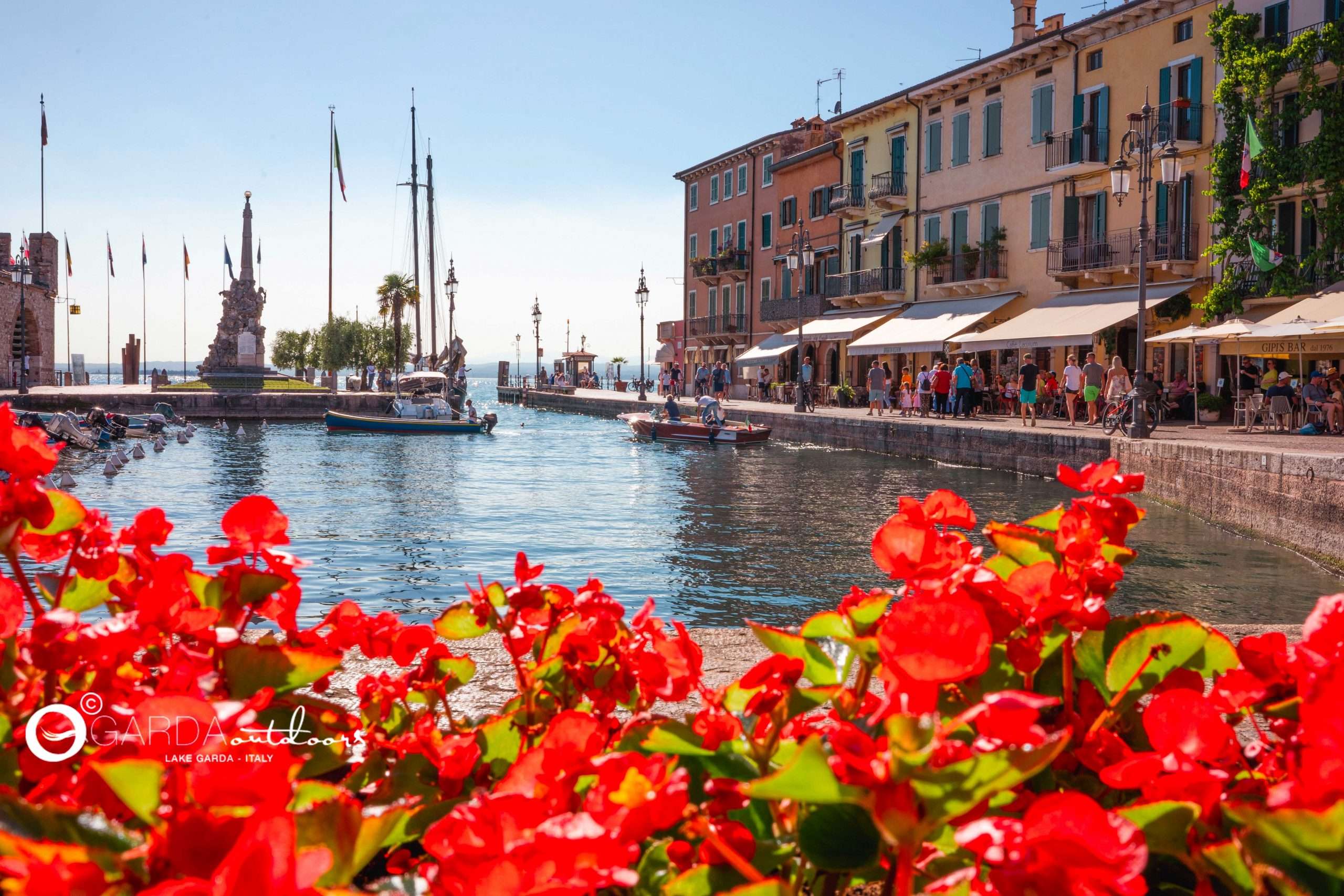
Where to sleep – Where to eat – Experiences on Lake Garda.
On Lake Garda there are many structures in which to stay, from small and well-kept B&B’s to resorts with wellness centers and beauty services, in the section dedicated to hotels find all the information you need to find the most suitable accommodation for you.
The same goes for restaurants, at this link you will find our selection of restaurants on Lake Garda. Remembering that Lake Garda offers several starred restaurants and the quality of the culinary offer is very high.
There are many activities and experiences you can do on Lake Garda, so we recommend you visit the section dedicated to experiences in our magazine by clicking here.
